In honor of Black History Month, we recognize the contributions of African-American astronauts to our nation’s space programs. Coming to NASA from a variety of backgrounds as military pilots, engineers, scientists, and physicians, these astronauts have made history-making contributions participating in space shuttle missions to perform critical tasks such as deploying and retrieving satellites, performing spacewalks, conducting science and technology research, and piloting and commanding space shuttle missions. More recently, African-American astronauts have played key roles in the assembly of the International Space Station (ISS), performing numerous spacewalks and robotic operations, and conducting research as expedition crewmembers. Several have distinguished themselves as senior leaders at NASA, including as the agency’s administrator. Looking to the future, African-American astronauts are among those selected as candidates for exploration missions in the Artemis Program.
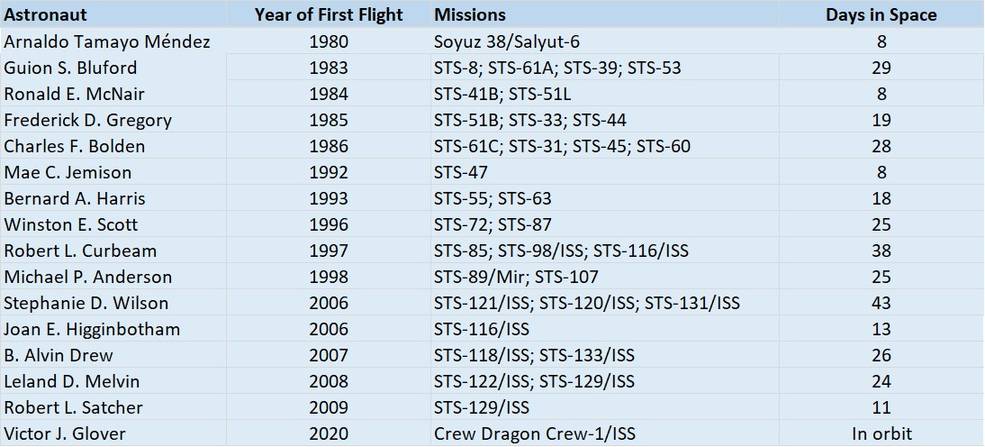
Table of African-American astronauts who have flown in space.
Robert H. Lawrence holds the honor as the first African-American selected for a space program. In June 1967, the U.S. Air Force selected Lawrence as a member of the third group of aerospace research pilots for the Manned Orbiting Laboratory (MOL) Program, a joint project of the Air Force and the National Reconnaissance Office to obtain high-resolution photographic imagery of America’s Cold War adversaries. Tragically, Lawrence lost his life in an aircraft accident in December 1967, and the Air Force cancelled the MOL Program in June 1969. Two months later, seven of the MOL astronauts transferred to NASA’s astronaut corps and all flew missions on the space shuttle. It is highly likely that had Lawrence lived, NASA would have selected him in that group and he would have flown as the first African-American astronaut. The first person of African heritage to fly in space, Arnaldo Tamayo Méndez of Cuba, spent eight days aboard the Soviet Salyut-6 space station in 1980. The Cuban Air Force selected Tamayo Méndez as part of the Soviet Union’s Interkosmos program that flew cosmonauts from friendly socialist countries on short visiting flights to their space stations to conduct experiments for their national space programs and academic institutions.
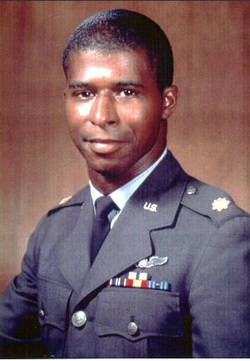
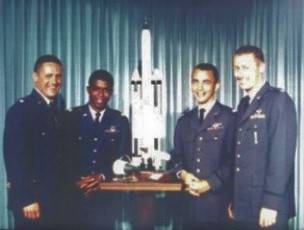
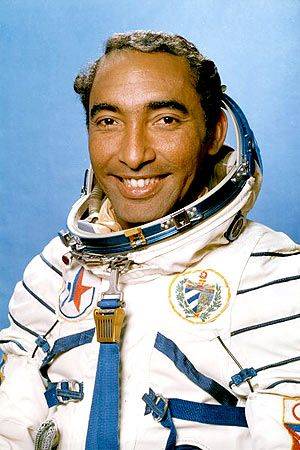
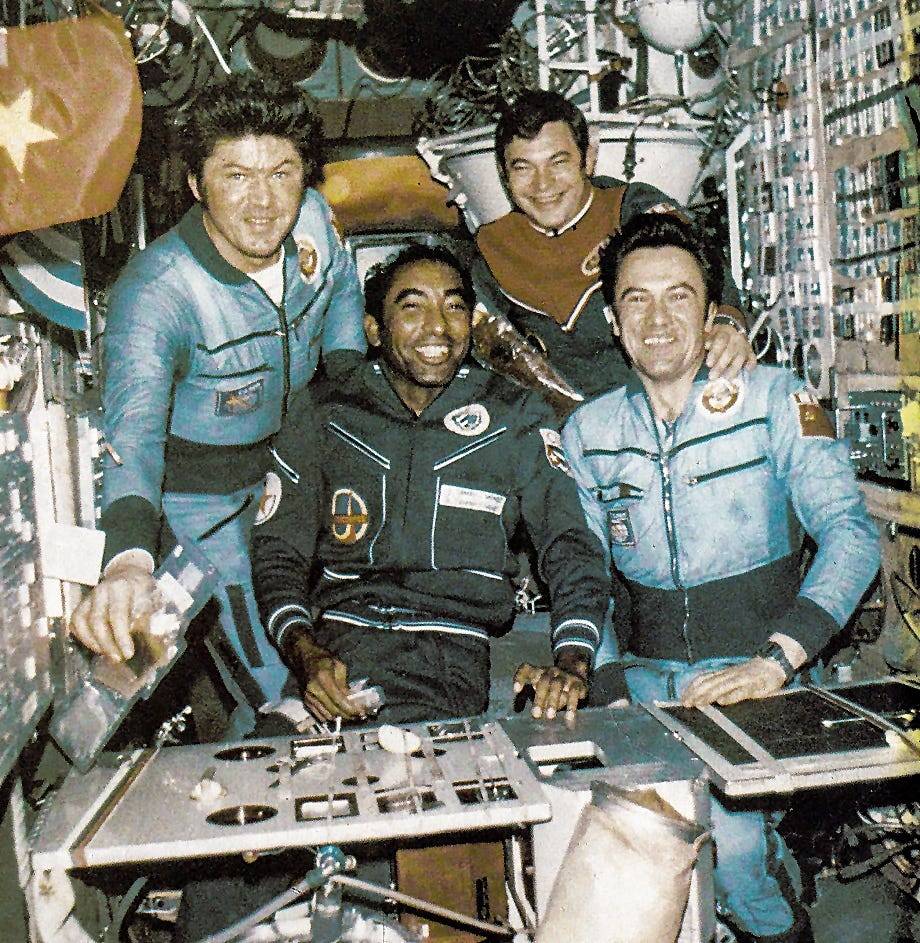
Left: Portrait of U.S. Air Force astronaut Robert H. Lawrence. Middle left: Lawrence, second from left, with his fellow Group 3 Manned Orbiting Laboratory astronauts. Middle right: Portrait of Cuban cosmonaut Arnaldo Tamayo Méndez. Right: Tamayo Méndez, second from left, with his Soviet crewmates aboard the Salyut-6 space station.
In January 1978, NASA selected its largest group of astronauts up to that time, 35 pilots and mission specialists, for the space shuttle program then under development. For the first time, NASA included women and minorities in the selection group, including three African-Americans, one pilot and two mission specialists. One of the three, Guion S. “Guy” Bluford, became the first African-American in space as a mission specialist aboard space shuttle Challenger’s STS-8 mission in 1983. During the six-day flight that featured the first night launch and night landing of the shuttle program, the astronauts deployed a communications satellite for India and performed tests with the remote manipulator system.
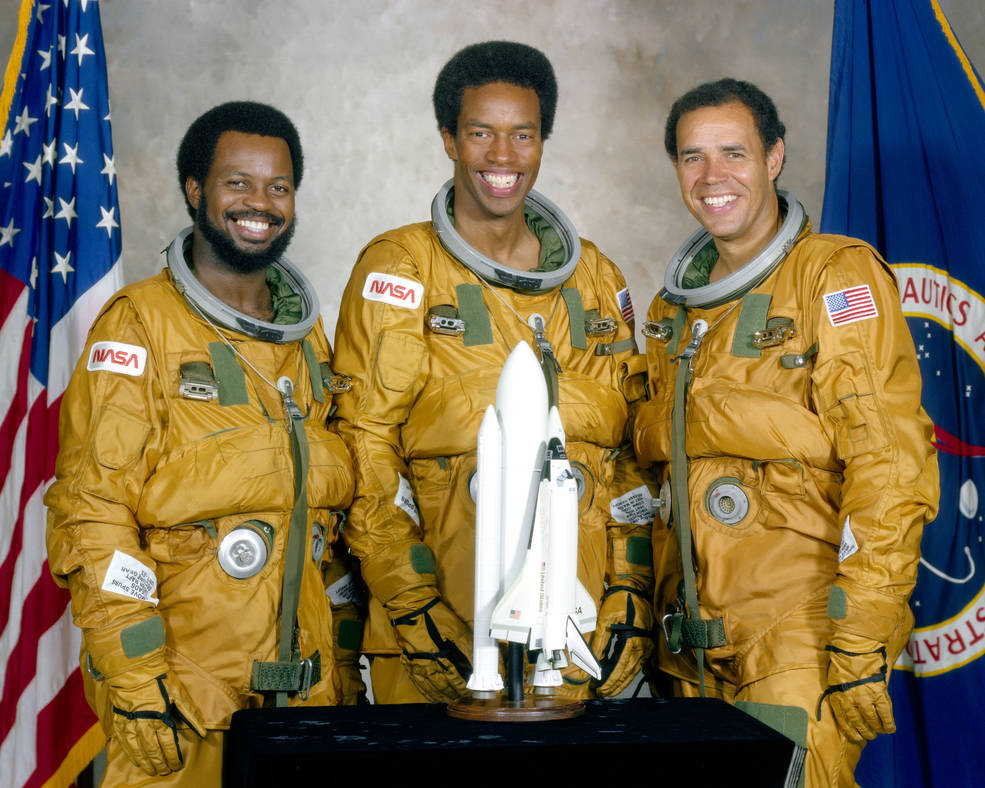
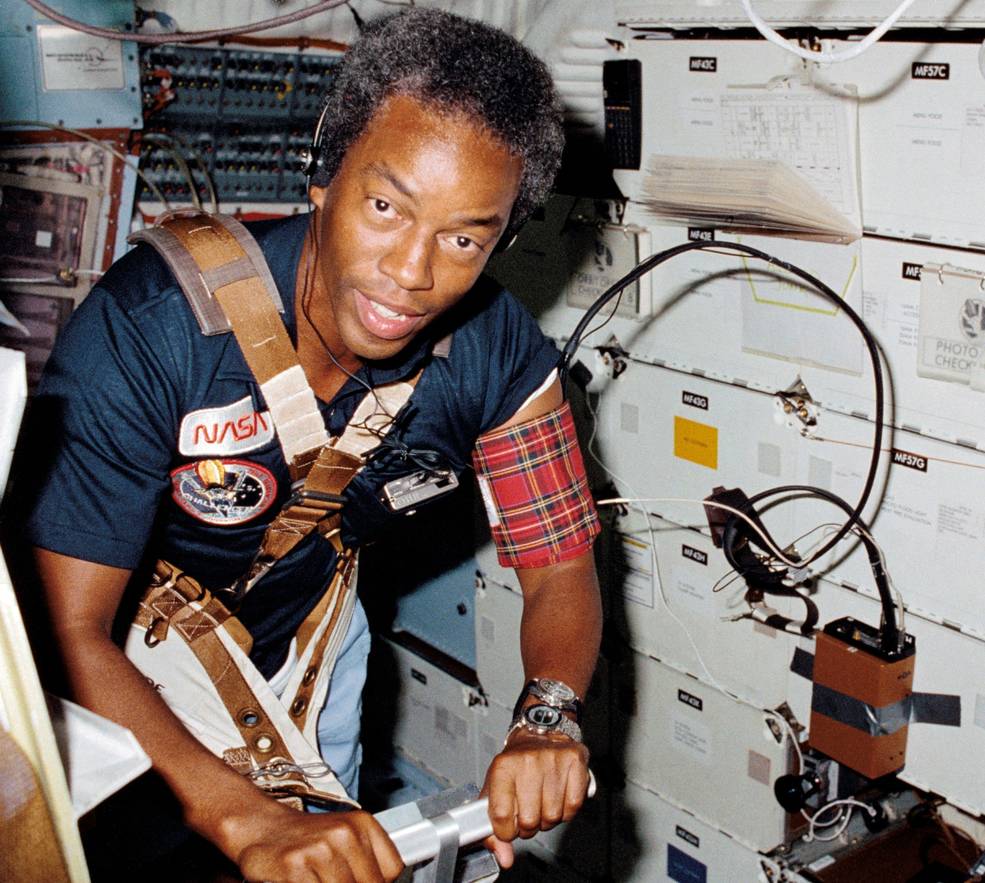
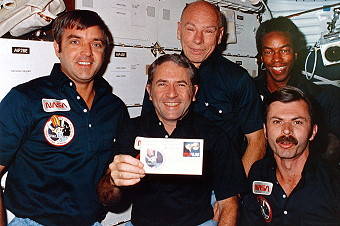
Left: Selected in 1978, NASA astronauts Ronald E. McNair, left, Guion S. “Guy” Bluford, and Frederick D. Gregory. Middle: Bluford exercising on the treadmill in the middeck of space shuttle Challenger during the STS-8 mission. Right: Bluford, right rear, with his fellow STS-8 crew members.
Bluford returned to space in October 1985 on Challenger’s STS-61A flight, serving as a mission specialist on Spacelab D1, a scientific mission sponsored by the West German space agency. The flight marked the first and so far only time that eight astronauts launched aboard a single spacecraft. During their seven days in orbit, the international crew conducted 75 experiments in a variety of scientific disciplines.

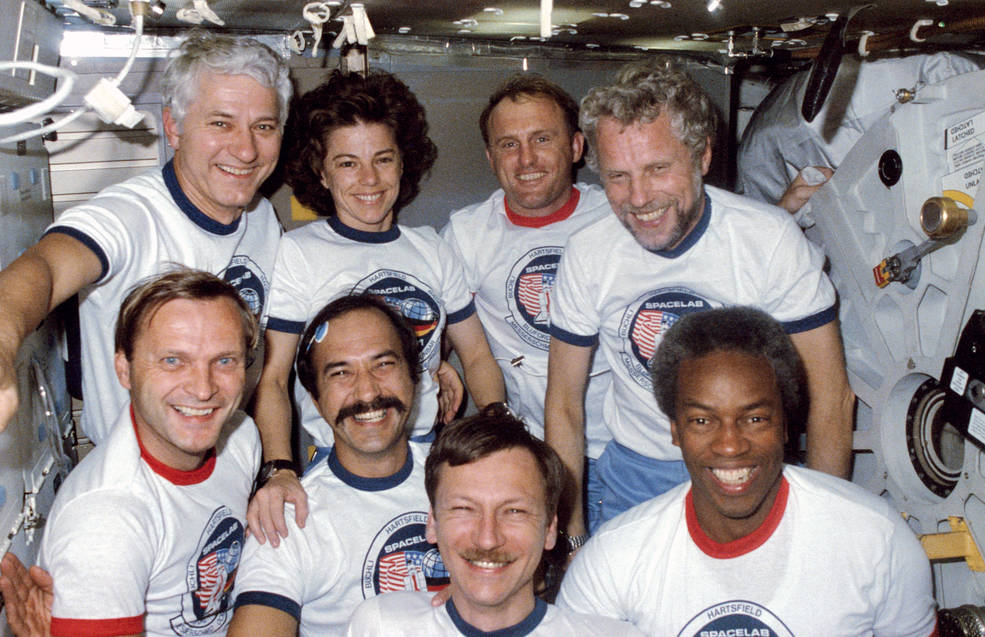
Left: Guion S. “Guy” Bluford, left, working on an experiment during the Spacelab D1 mission. Right: Bluford, lower right, with the rest of the eight-member international STS-61A crew.
Making his third trip into space, Bluford launched about space shuttle Discovery in April 1991 on STS-39, the first flight to carry five mission specialists. During the eight-day unclassified mission for the Department of Defense (DOD), Bluford and his crewmates divided into two teams working around the clock. They conducted a series of observations of Earth’s upper atmosphere and its interactions with the shuttle orbiter. The mission’s unusually high 57-degree orbital inclination allowed the astronauts to observe most of the Earth’s landmasses. Using the shuttle’s remote manipulator system, they deployed and retrieved the Shuttle Pallet Satellite-II that conducted independent observations for two days, including monitoring shuttle thruster and engine firings.
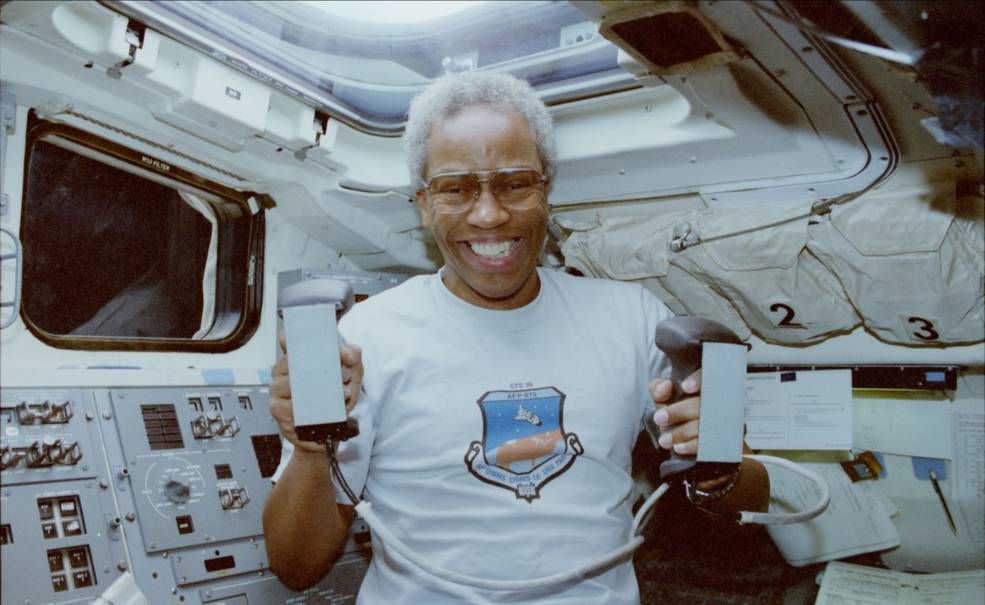
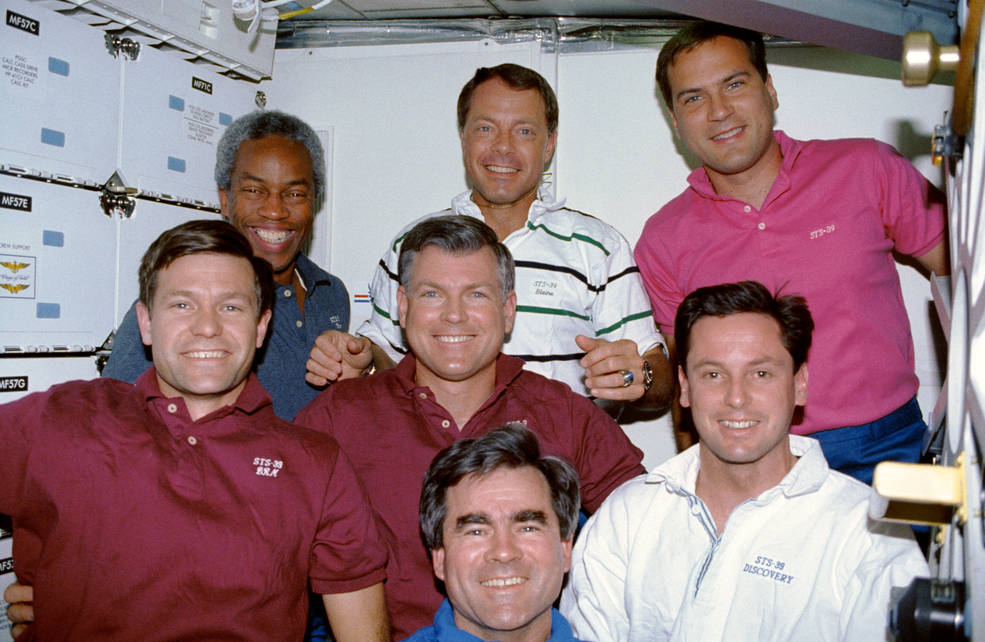
Left: Guion S. “Guy” Bluford on the flight deck of space shuttle Discovery. Right: Bluford, at left in the back, posing for the crew photo during STS-39.
For his fourth and final spaceflight, Bluford lifted off aboard space shuttle Discovery in December 1992. During the seven-day STS-53 flight, the final mission dedicated to the DOD, Bluford and his four crewmates deployed the third Satellite Data System-2 military communications satellite and conducted several unclassified experiments. On his four missions, he logged 688 hours of spaceflight time. Bluford retired from NASA in 1993 to join the private sector.
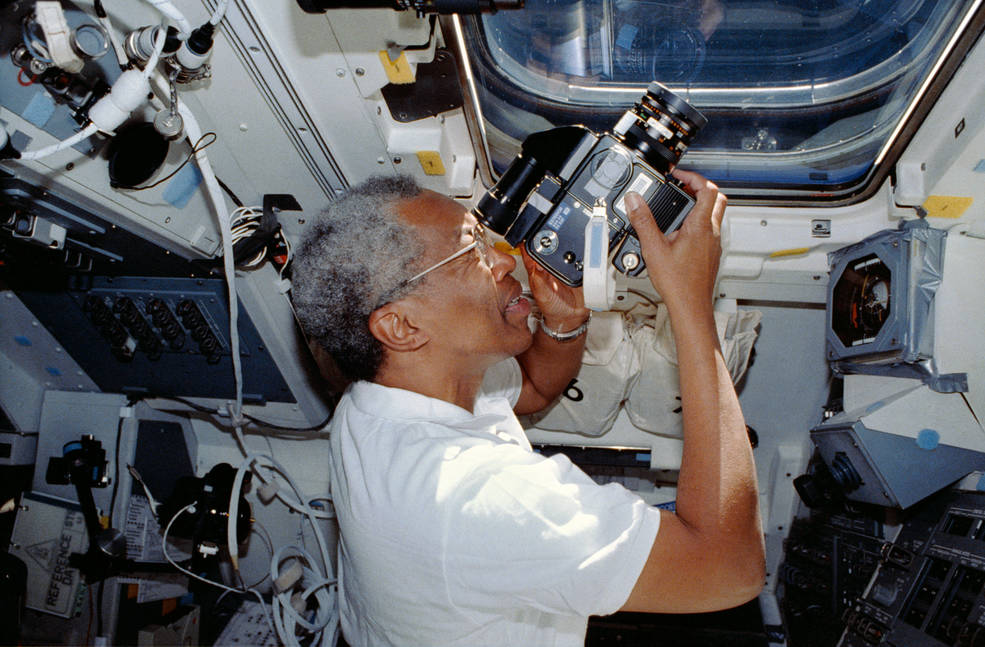
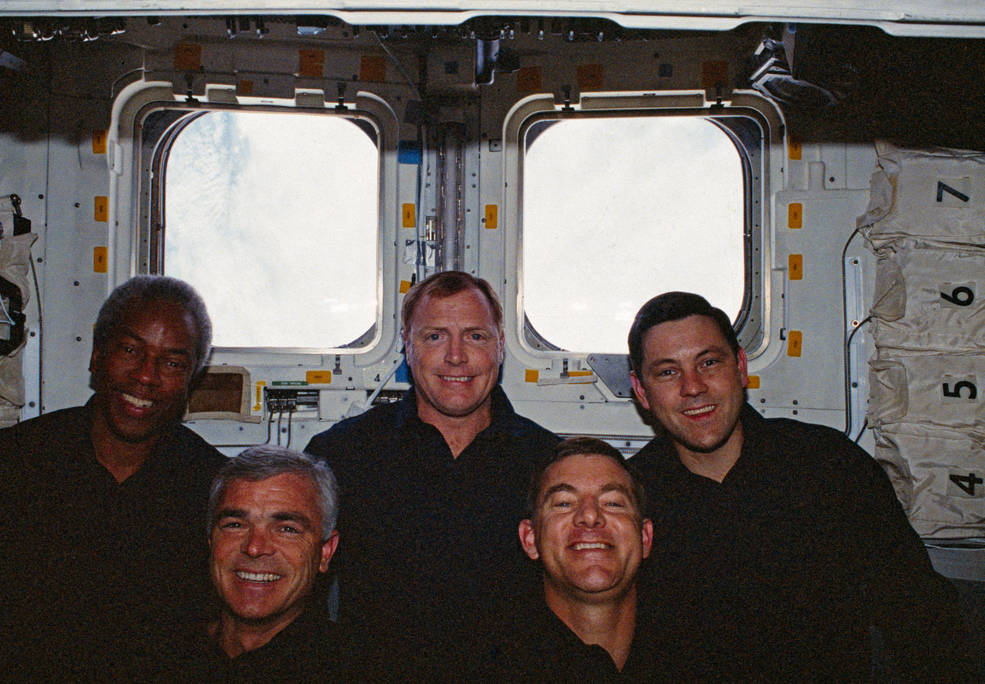
Left: Guion S. “Guy” Bluford photographing the Earth with a video camcorder through the shuttle TBS’s overhead window. Right: Bluford, left, posing with his STS-53 crewmates.
Also selected in the 1978 astronaut class, physicist Ronald E. McNair made his first space flight aboard space shuttle Challenger in February 1984. During the STS-41B mission, McNair and his crewmates deployed two commercial satellites and two of them testing the Manned Maneuvering Unit during the first two untethered spacewalks. McNair, an accomplished jazz saxophonist, became the first person to play a soprano sax in space. Space limitations in the shuttle precluded flying McNair’s favorite tenor sax, so he learned to play the smaller version of the instrument for his space flight. The eight-day mission ended with the first space shuttle landing back at NASA’s Kennedy Space Center (KSC) in Florida.
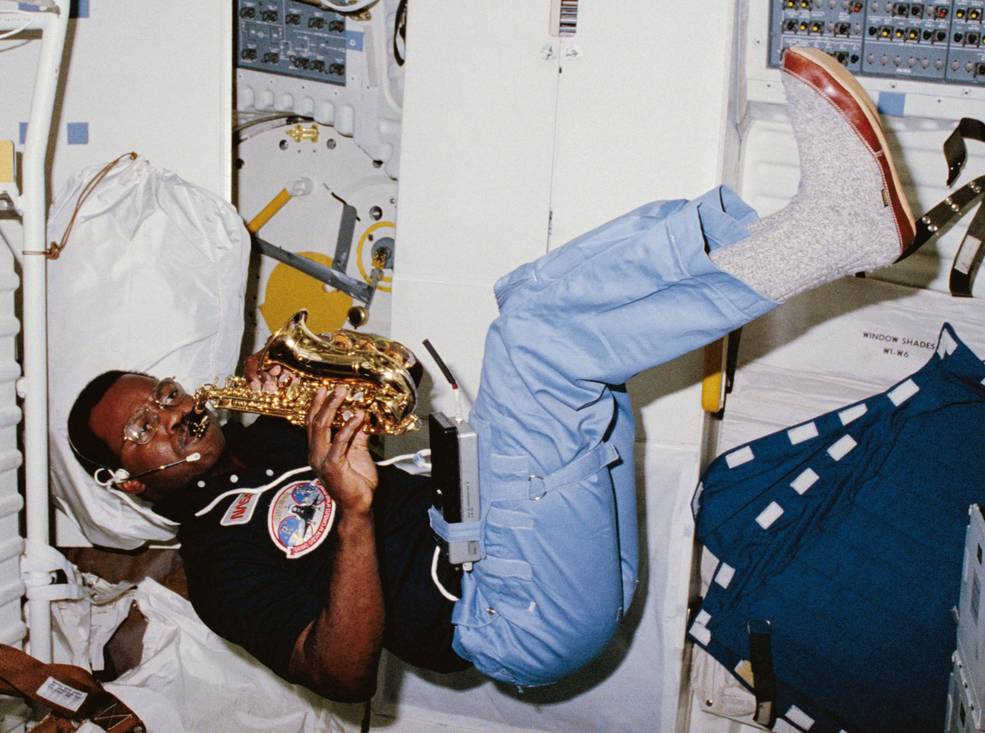
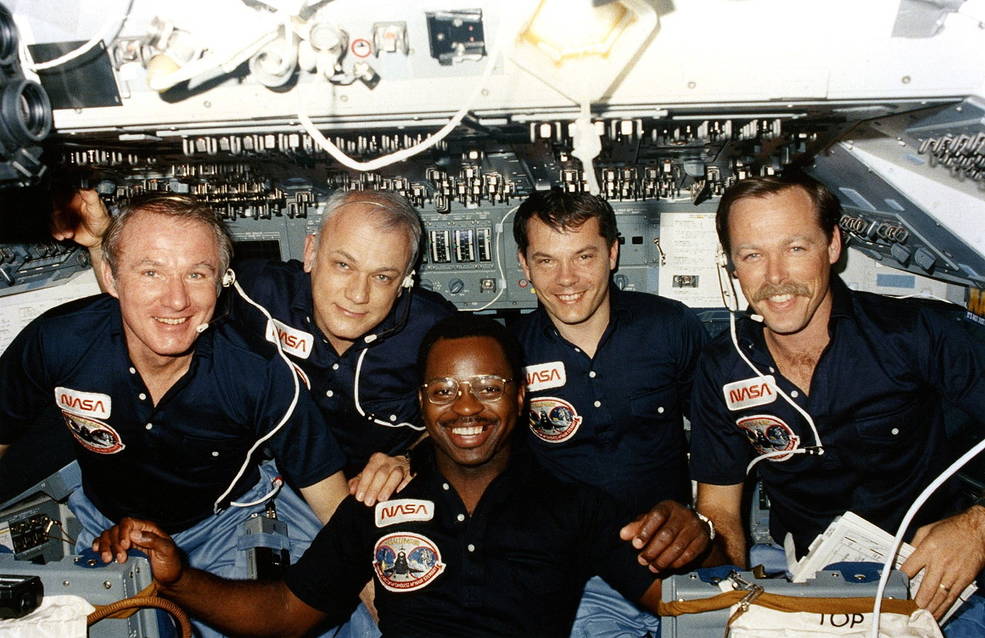
Left: NASA mission specialist Ronald E. McNair playing the soprano saxophone in the middeck of space shuttle Challenger. Right: McNair, front and center, with the rest of the STS-41B crew.
McNair’s next flight assignment was also on Challenger, the January 1986 STS-51L mission that included the first teacher in space. Although no spacewalks were planned on the flight, McNair was one of the two astronauts trained for any contingencies that might require a spacewalk. Tragically, the mission ended 63 seconds after liftoff when an explosion caused by a faulty solid rocket booster O-ring, resulted in the loss of the seven-member crew and the space shuttle Challenger. McNair had planned to play a saxophone solo during the STS-51L mission for composer Jean-Michel Jarre’s album Rendez-Vous, including participation in a concert via a live feed. As a tribute to McNair, the album’s sixth and last piece is entitled Last Rendez-Vous (Ron’s Piece) – ‘Challenger’.
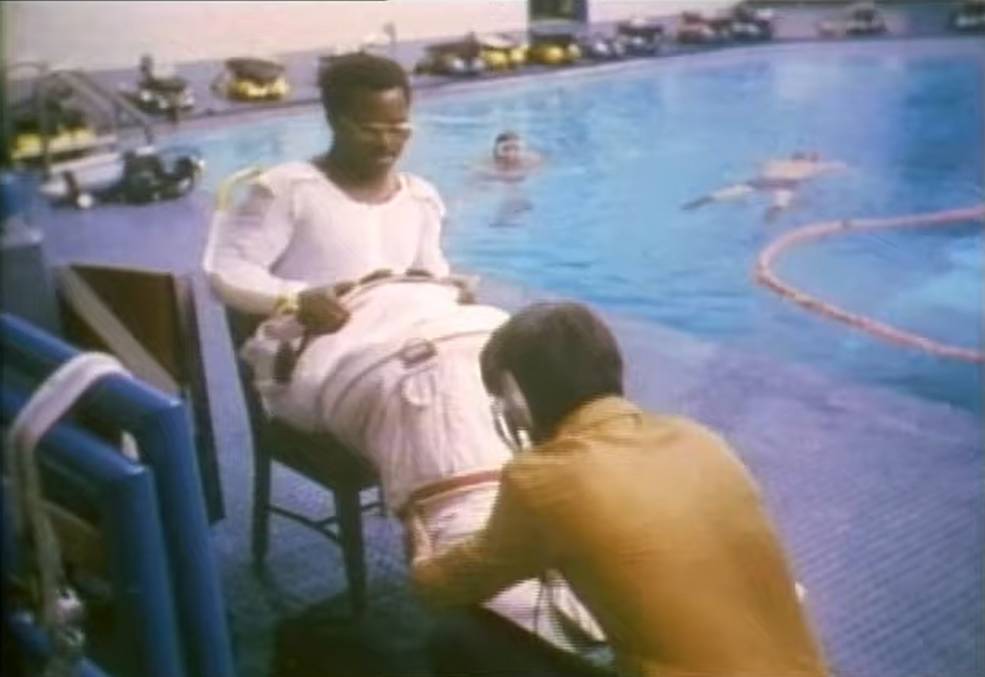
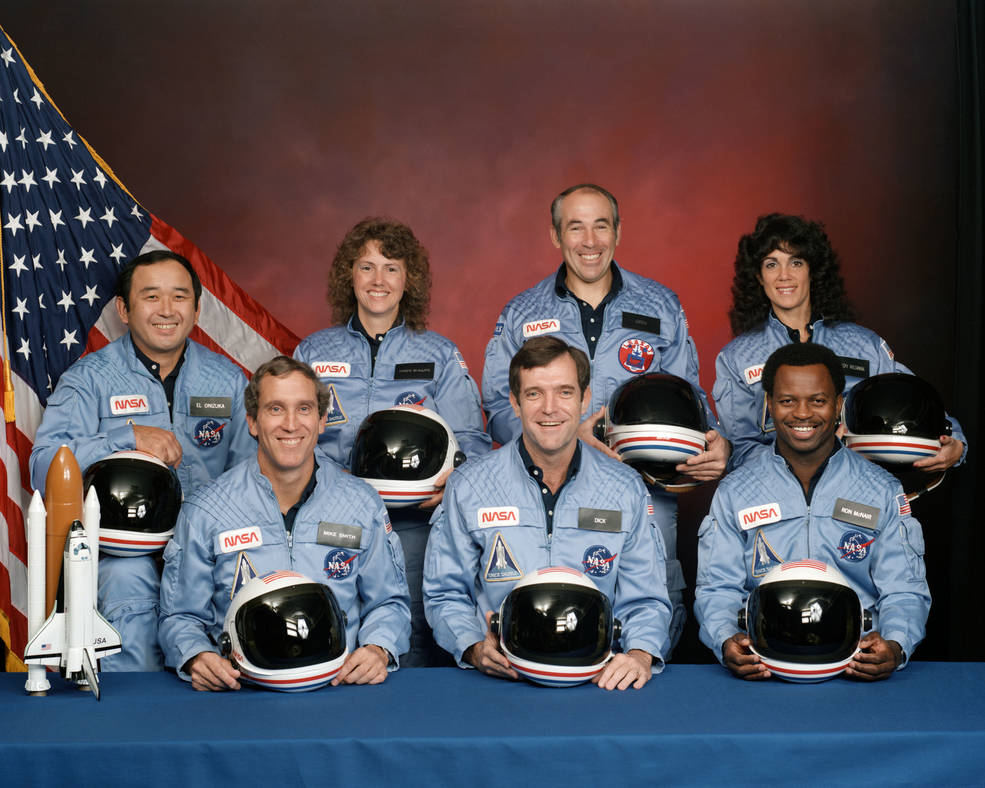
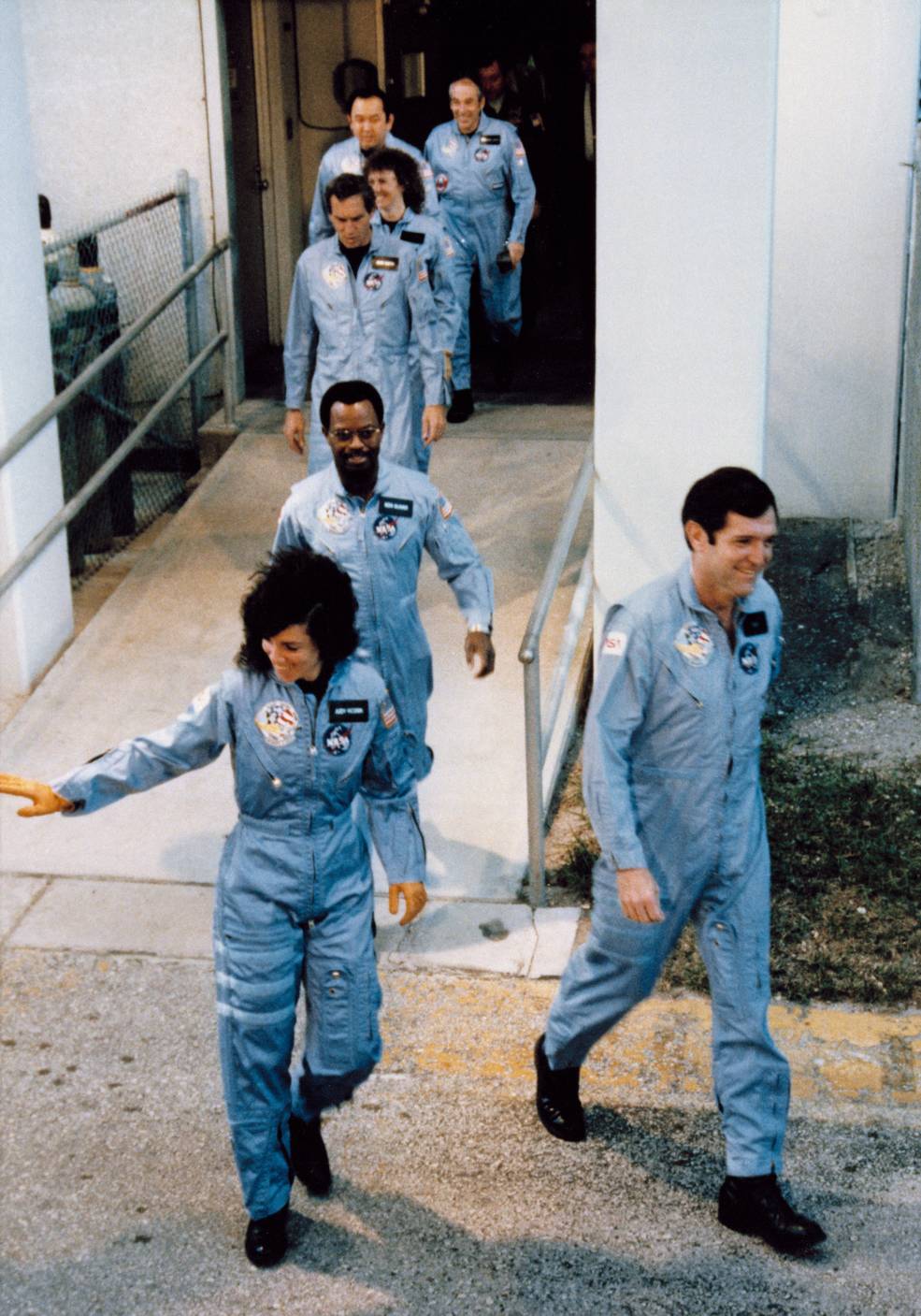
Left: Astronaut Ronald E. McNair donning his spacesuit for contingency spacewalk training in the Weightless Environment Training Facility at NASA’s Johnson Space Center in Houston. Middle: McNair, front row right, in the official STS-51L crew photograph. Right: McNair, third in line, walking with the rest of the STS-51L crew to the Astrovan for the ride out to the launch pad.
The third African-American member of the class of 1978, U.S. Air Force pilot Frederick D. Gregory, made his first flight into space in April 1985 aboard space shuttle Challenger. On the STS-51B mission, Gregory became the first African-American astronaut to pilot a space shuttle. During the seven-day Spacelab-3 science mission, the seven crew members divided into two teams to round-the-clock preform 15 experiments in five different disciplines, including the first flight of squirrel monkeys.
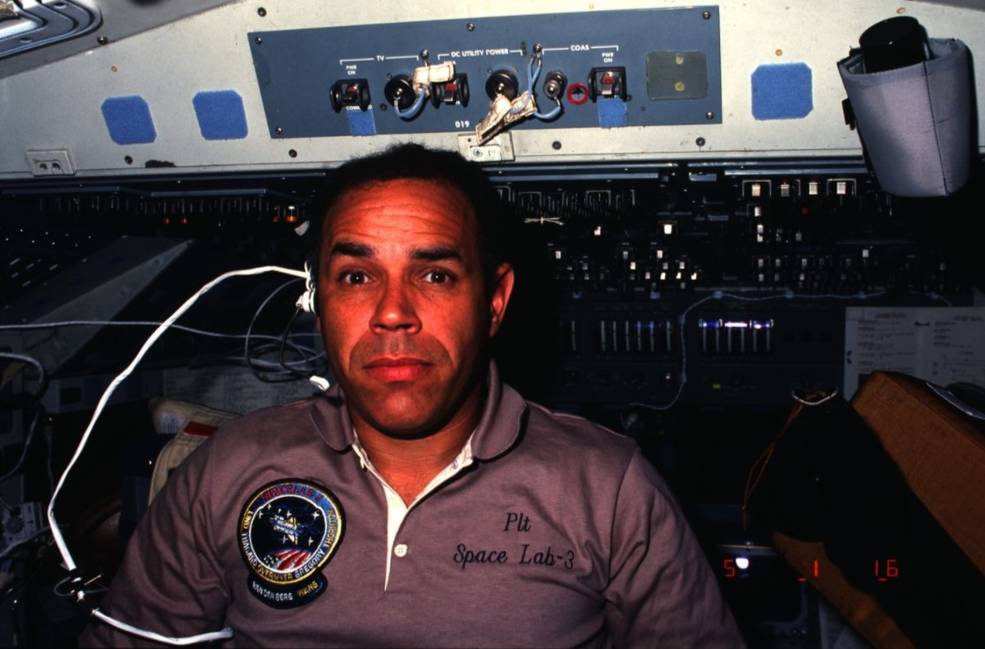
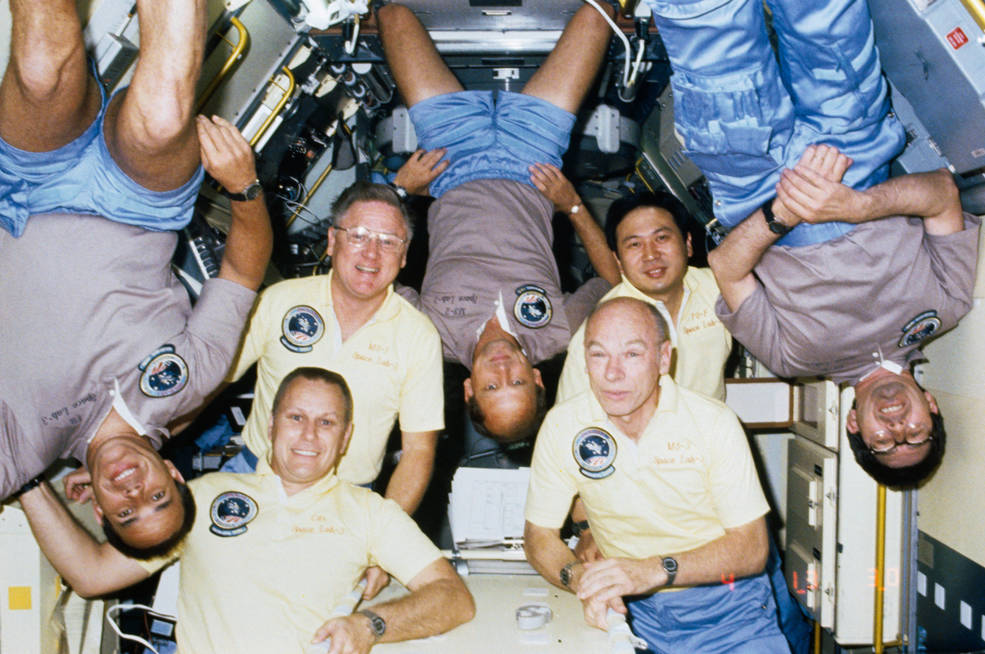
Left: Astronaut Frederick D. Gregory on the flight deck of space shuttle Challenger. Right: Gregory, left and upside down, and the rest of the STS-51B crew in the Spacelab module.
On his second trip into space, Gregory flew as the first African-American commander of a space shuttle, the STS-33 mission of Discovery in November 1989. During the five-day flight, the five-member crew completed the primary goal of the DOD mission to deploy a Magnum electronic intelligence satellite.
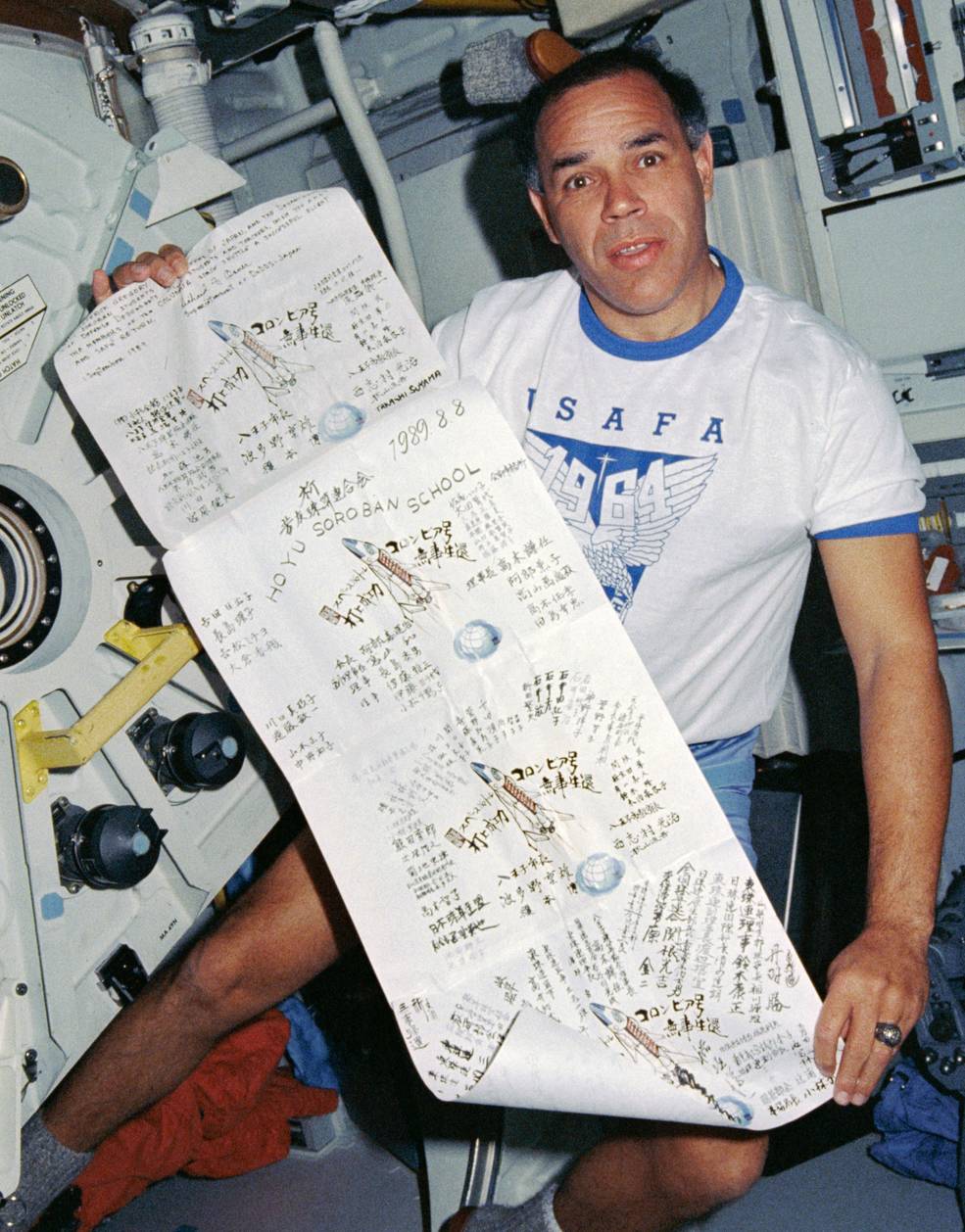
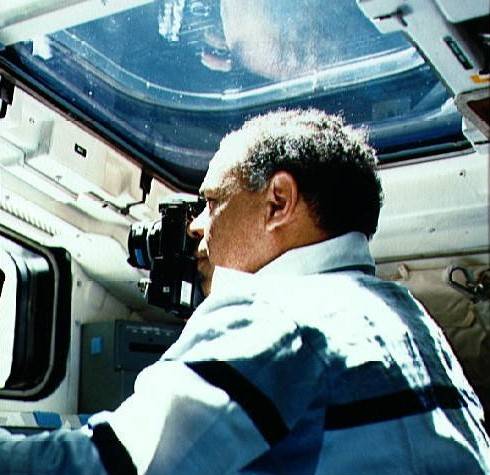
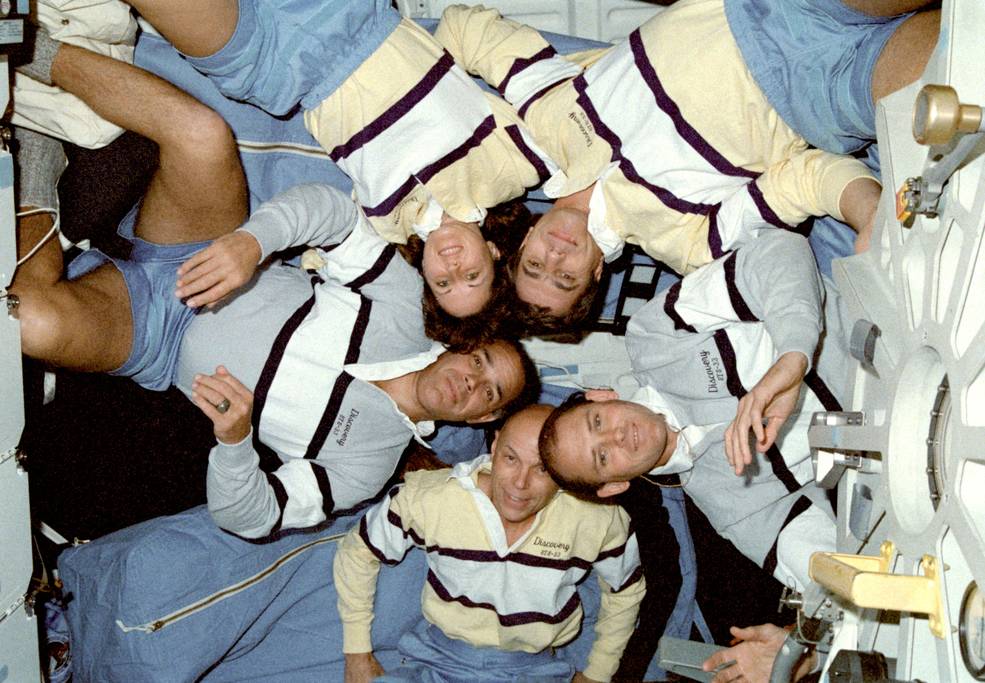
Left: STS-33 Commander Frederick D. Gregory displays a banner drawn and signed by Japanese students and by the superintendent of Department of Defense Dependents School in Japan. Middle: Gregory taking photographs through the shuttle’s aft windows. Right: Gregory, left, with his STS-33 crewmates.
Gregory once again served as commander on his third and final spaceflight, the DOD-dedicated STS-44 mission. During the seven-day November 1991 flight aboard space shuttle Atlantis, Gregory and his five crewmates deployed a Defense Support Program satellite designed to detect nuclear detonations and missile and space launches. After his third spaceflight, Gregory served at NASA Headquarters in Washington, D.C., in several high-level management positions. He served as NASA’s first African-American deputy administrator from 2002 until his retirement from the agency in 2005.
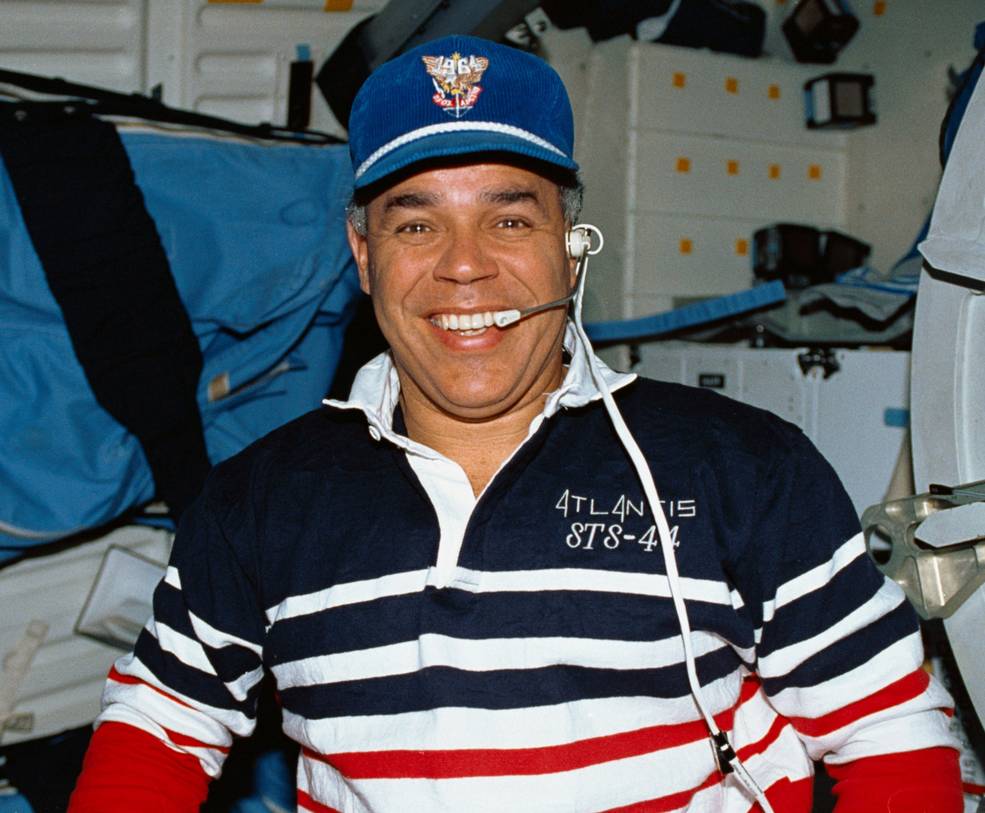
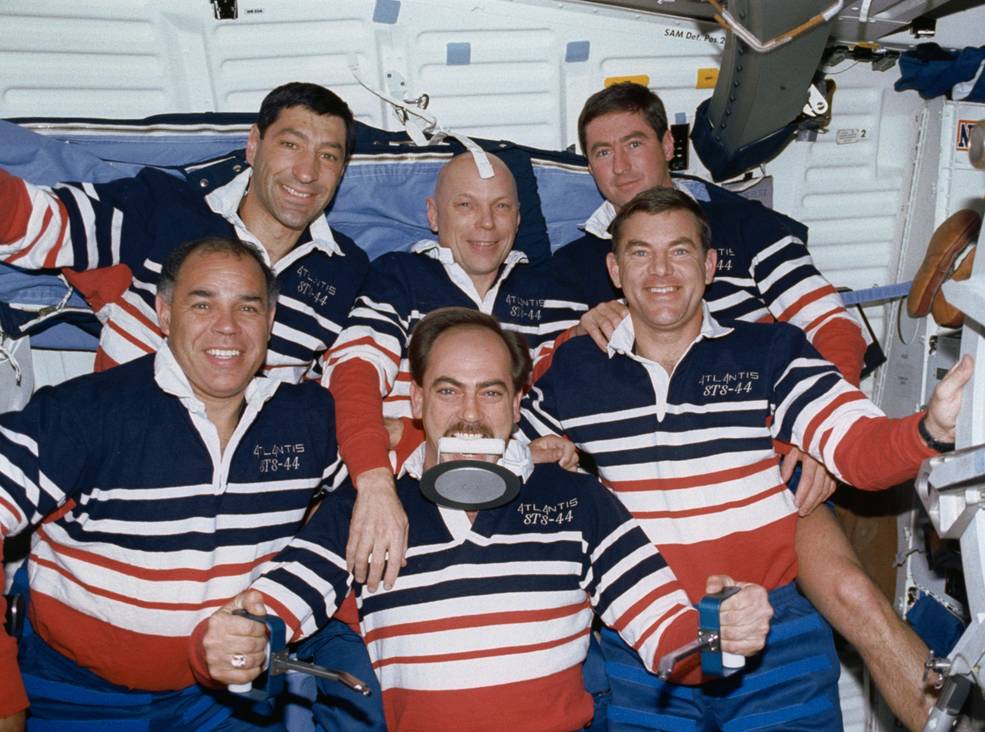
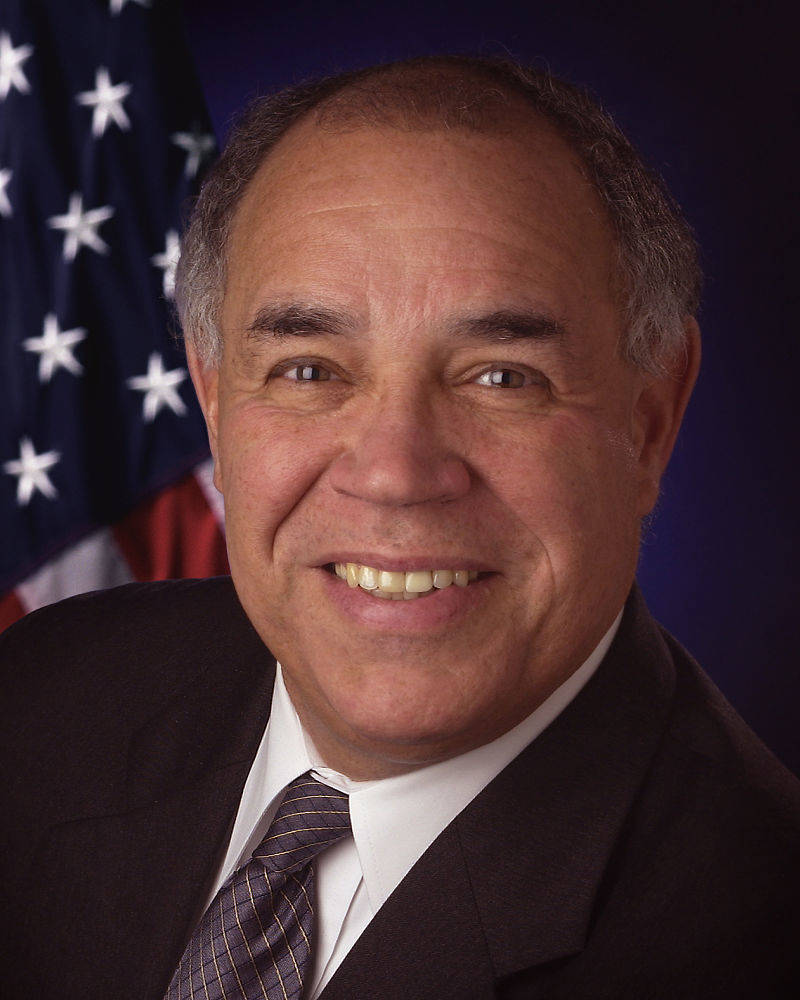
Left: STS-44 Commander Frederick D. Gregory talking to Mission Control from the middeck of space shuttle Atlantis. Middle: Gregory, front row left, in the onboard STS-44 crew photo. Right: Official NASA portrait of Gregory as Deputy NASA Administrator.
Selected in 1980 in the second group of space shuttle astronauts, U.S. Marine pilot Charles F. Bolden’s first spaceflight took place in January 1986 aboard space shuttle Columbia. He served as the pilot for the six-day STS-61C mission, the last mission before the Challenger accident, to deploy a commercial communications satellite. The flight also featured the first flight of a U.S. Congressman, C. William “Bill” Nelson, whose district included KSC.
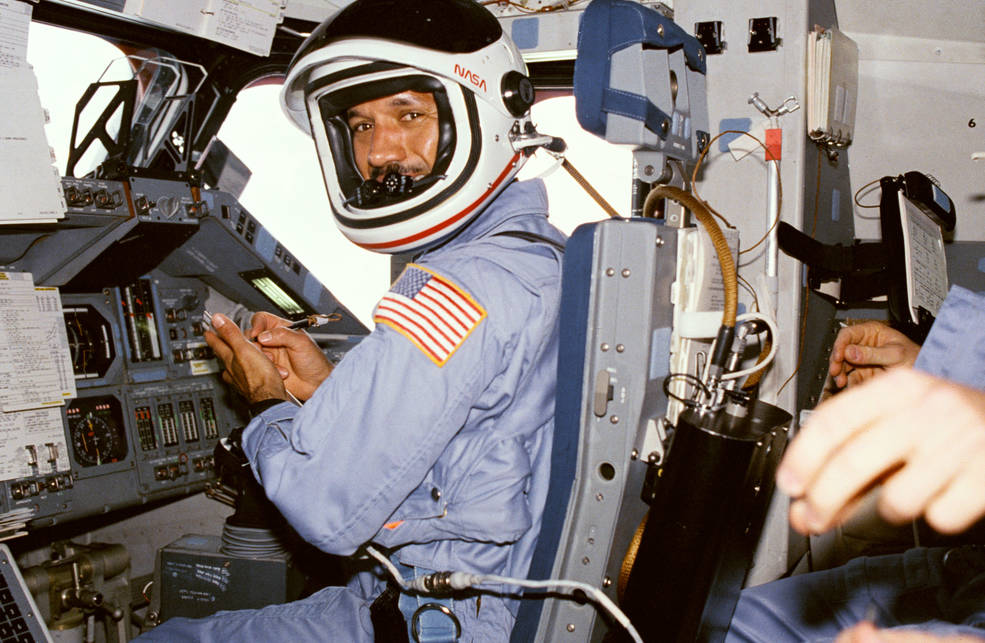
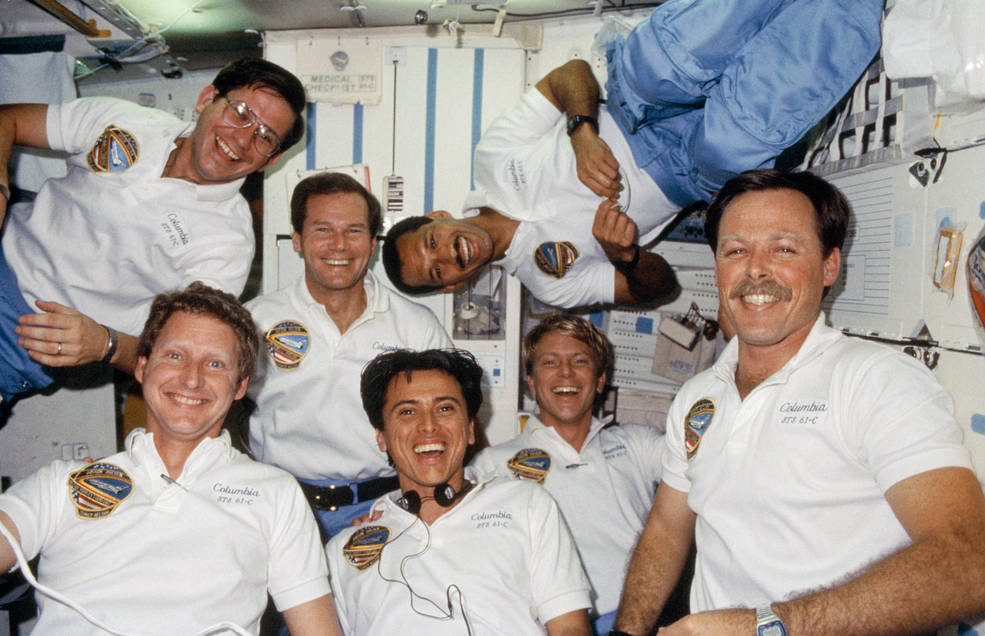
Left: Charles F. Bolden in the pilot’s seat of space shuttle Columbia preparing for reentry. Right: Bolden, upper right, with his fellow STS-61C crew members.
Bolden again served as pilot during his second trip into space in April 1990, the five-day STS-31 mission to deploy the Hubble Space Telescope, the orbiting observatory that has changed our view of the Universe in its 30 years of surveying the skies. The space shuttle Discovery reached a then-record altitude of 380 miles to place Hubble in its operational orbit well above the Earth’s atmosphere.
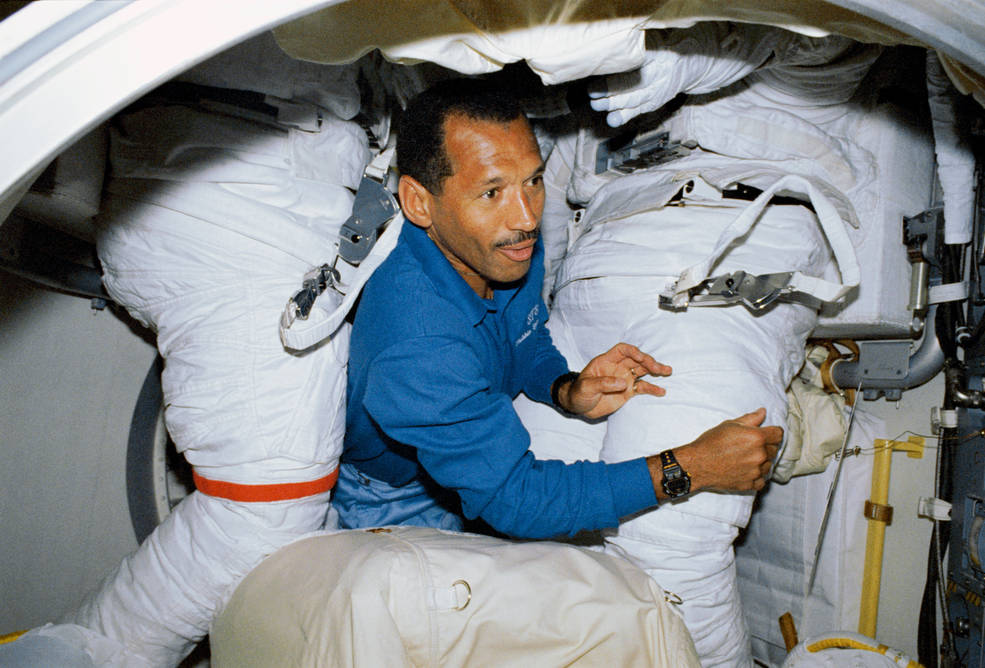
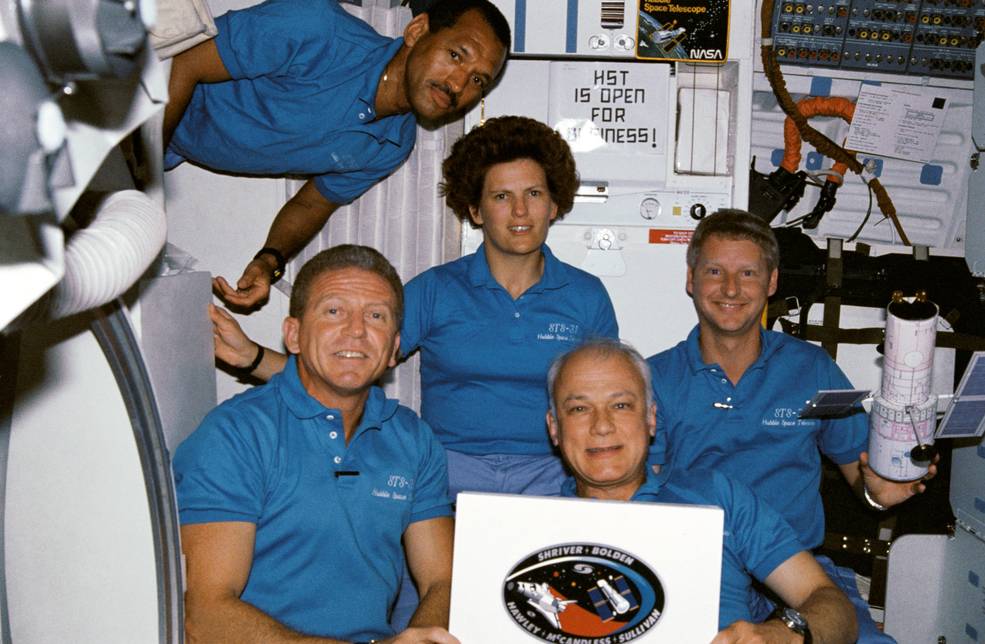
Left: STS-31 pilot Charles F. Bolden in the airlock of space shuttle Discovery assisting with contingency spacewalk preparations. Right: Bolden, upper left, with his STS-31 crewmates following the deployment of the Hubble Space Telescope.
On his third spaceflight, Bolden flew as commander of STS-45, a nine-day mission aboard space shuttle Atlantis in March 1992. The seven-member crew, divided into two teams to provide uninterrupted data gathering 24-hours a day, operated 12 instruments from 7 countries mounted in the payload bay as part of the Atmospheric Laboratory for Applications and Science-01 mission. Bolden and his crew completed 250 maneuvers to bring Atlantis into the correct position to acquire the required measurements.
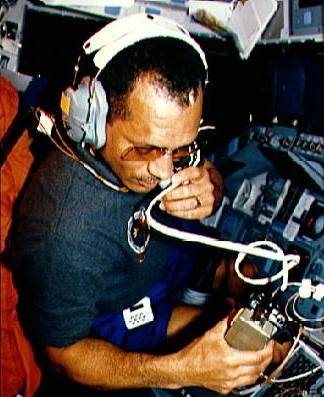
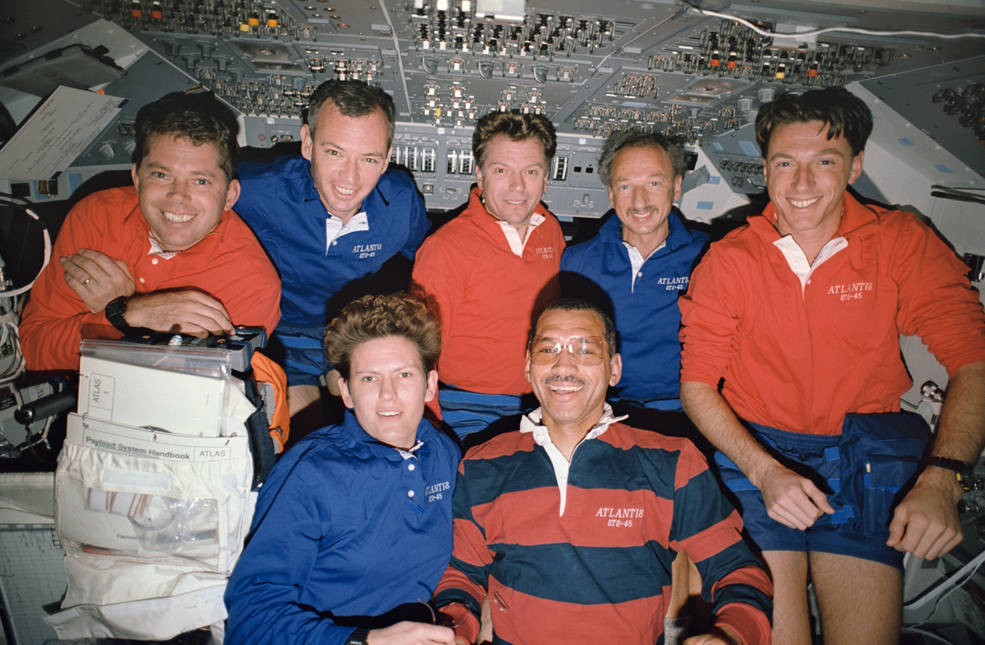
Left: STS-45 Commander Charles F. Bolden communicating on the amateur radio. Right: Bolden, front row right, posing with the rest of the STS-45 crew on the shuttle’s flight deck.
Bolden returned to space for a fourth time as commander of Discovery’s STS-60 mission, the first flight of the Shuttle-Mir Program. Russian cosmonaut Sergei K. Krikalev flew as a mission specialist during the nine-day space shuttle mission that included a Spacehab module to conduct a variety of scientific experiments. During his four flights, Bolden logged more than 680 hours of spaceflight time. Shortly after STS-60, he retired from NASA and returned to the U.S. Marine Corps, serving there until 2004. In 2009, President Barack H. Obama nominated and the Senate confirmed Bolden as NASA’s 12th and its first African-American administrator, in which position he served until 2017.
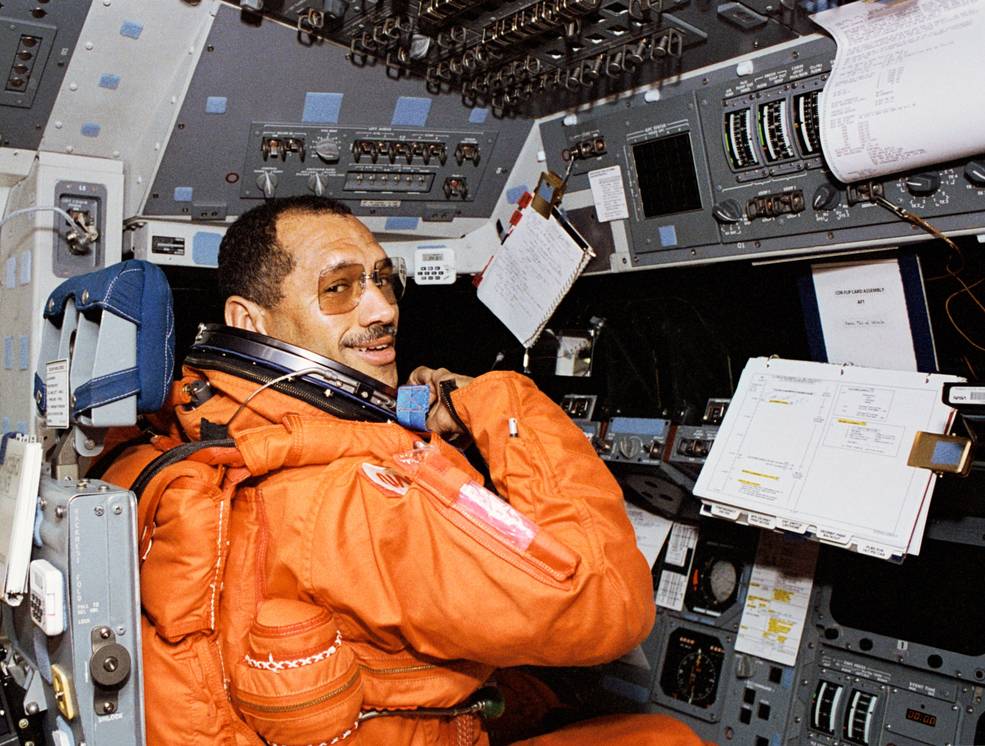
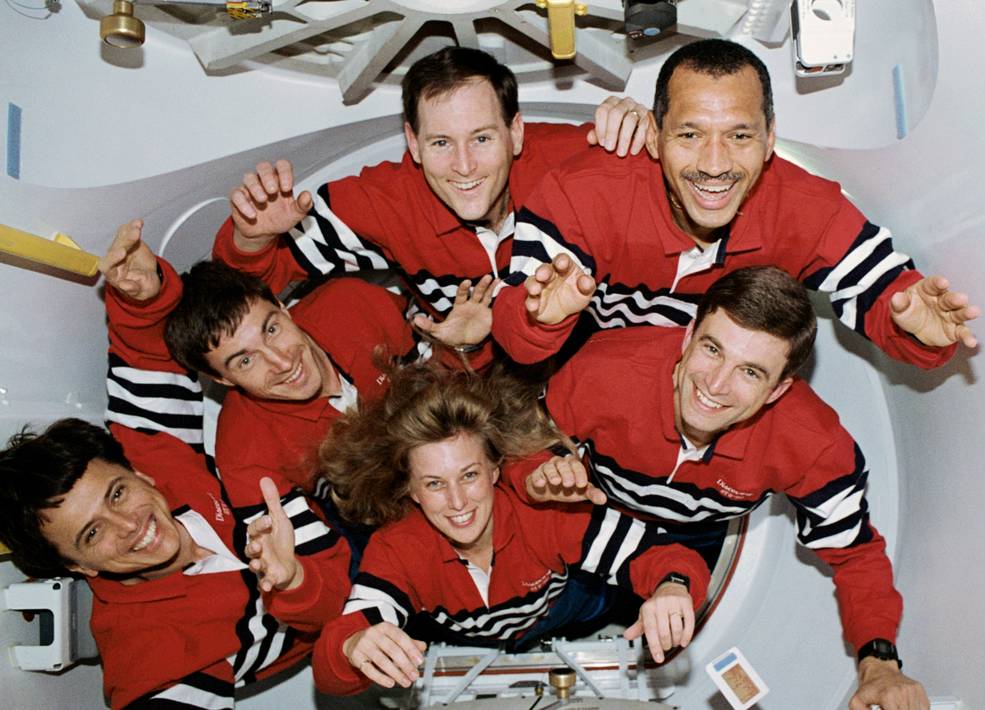
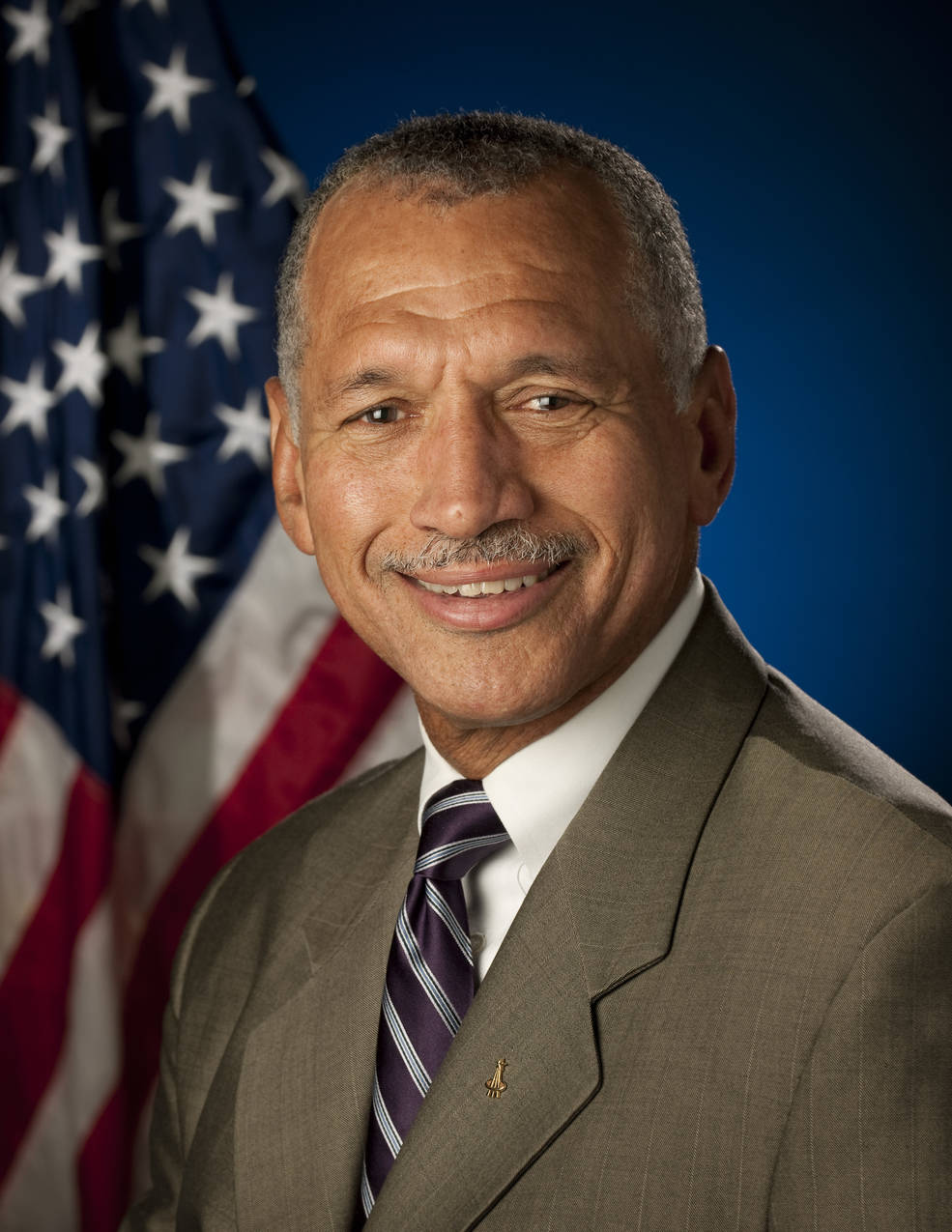
Left: STS-60 Commander Charles F. Bolden preparing space shuttle Discovery for reentry. Middle: Bolden, upper right, with his STS-60 crewmates. Right: Official NASA portrait of Bolden as the agency’s first African-American administrator.
Selected as an astronaut in 1987, physician Dr. Mae C. Jemison became the first African-American woman to fly in space in 1992 as a mission specialist on STS-47. She and her six crewmates conducted 44 life sciences and materials sciences experiments aboard Endeavour’s Spacelab-J mission, sponsored by Japan’s National Space Development Agency (NASDA), now the Japan Aerospace Exploration Agency. Jemison retired from NASA in 1993 but continued to promote space exploration, including writing children’s books and appearing in an episode of Star Trek: The Next Generation.
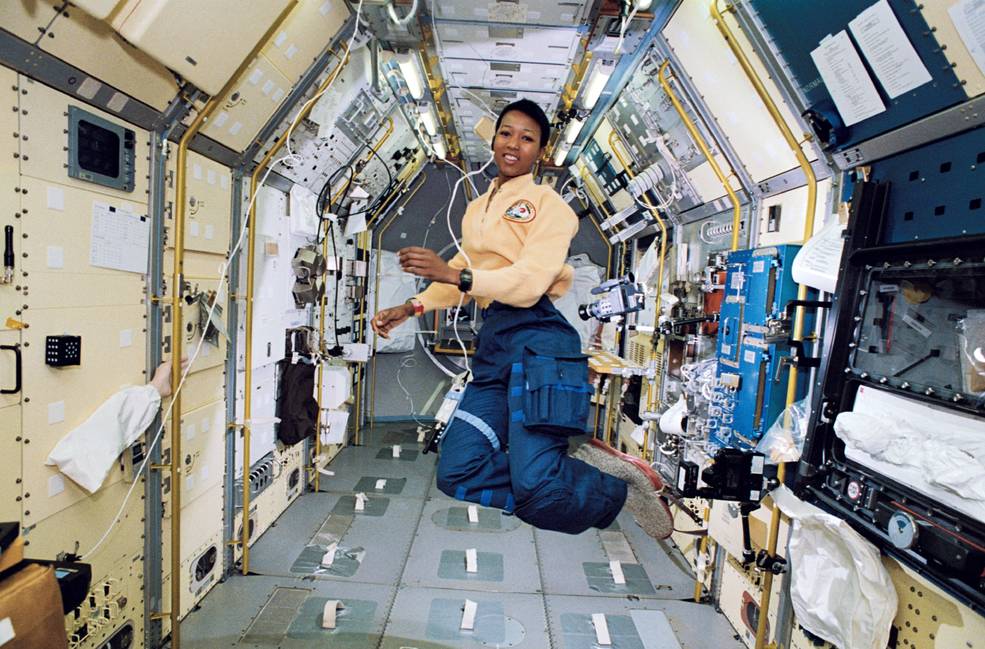
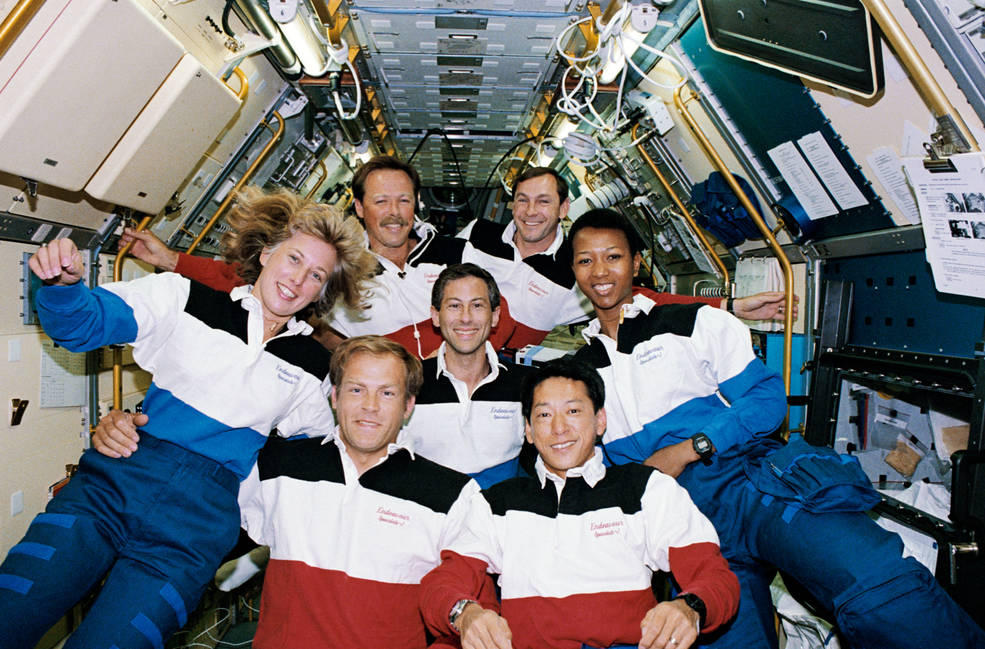
Left: Mission Specialist Dr. Mae C. Jemison in the Spacelab-J module during the STS-47 mission. Right: Jemison, right, with the rest of the STS-47 crew posing in the Spacelab-J module.
Flight surgeon Dr. Bernard A. Harris, selected as a NASA astronaut in 1990, completed his first space flight in April 1993 as a mission specialist on STS-55, the German Spacelab D2 mission. During the 10-day Columbia flight, Harris and his crewmates split into two shifts and conducted 88 experiments sponsored by 11 nations in six scientific disciplines.
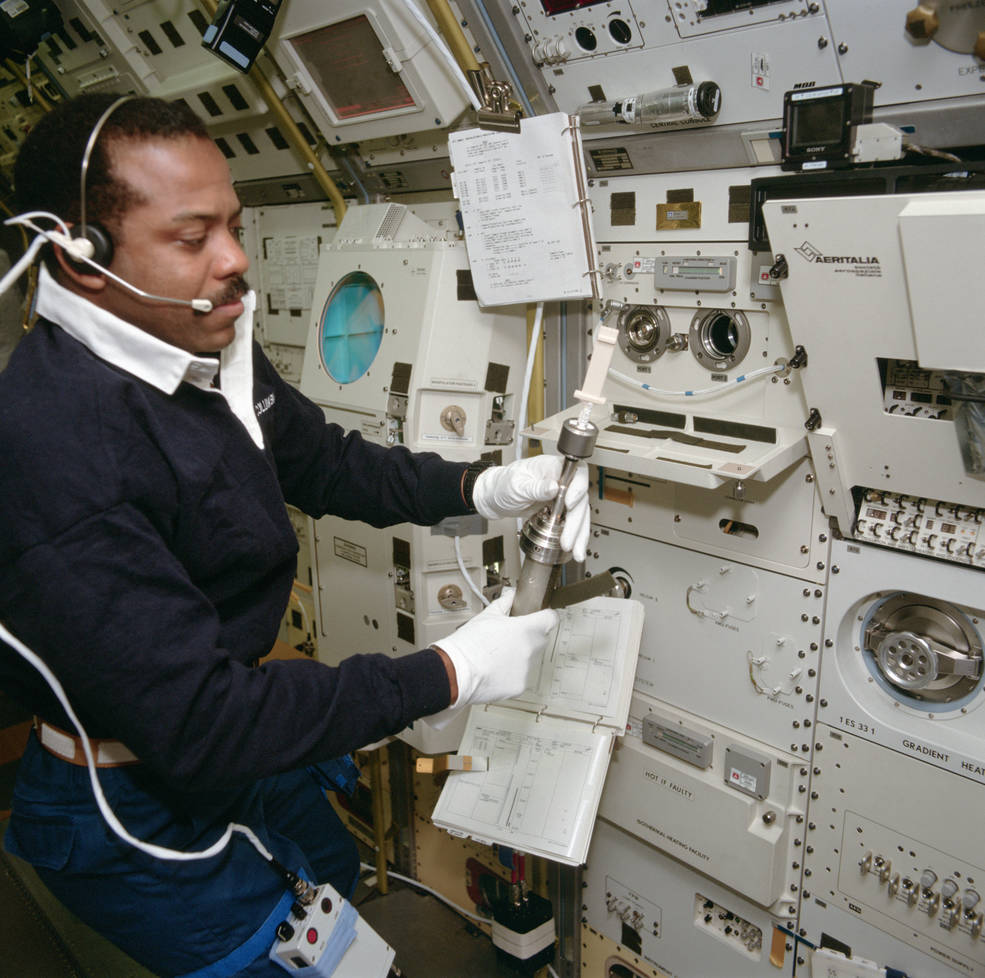
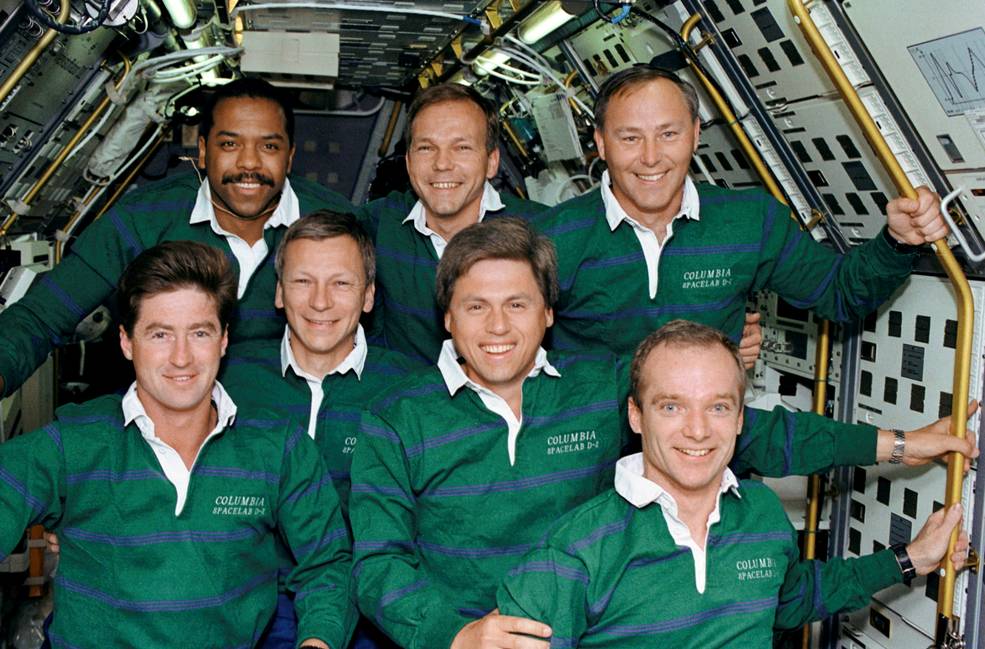
Left: Mission Specialist Dr. Bernard A. Harris works on a materials experiment in the Spacelab-D2 module during STS-55. Right: Harris, back row left, with his STS-55 crew mates.
Harris returned to space on his second flight, as the first African-American astronaut designated as the Payload Commander for the mission, in charge of managing the scientific experiments conducted in the Spacehab module. Discovery’s STS-63 mission, the second Shuttle-Mir flight, included a rendezvous with the Mir space station. The February 1995 flight also featured the first woman to pilot a space shuttle, Eileen M. Collins. During the eight-day mission, Harris conducted a 4-hour, 39-minute spacewalk, the first American-African astronaut to do so. Harris retired from NASA in 1996, remaining active in the fields of medicine, research, and education.
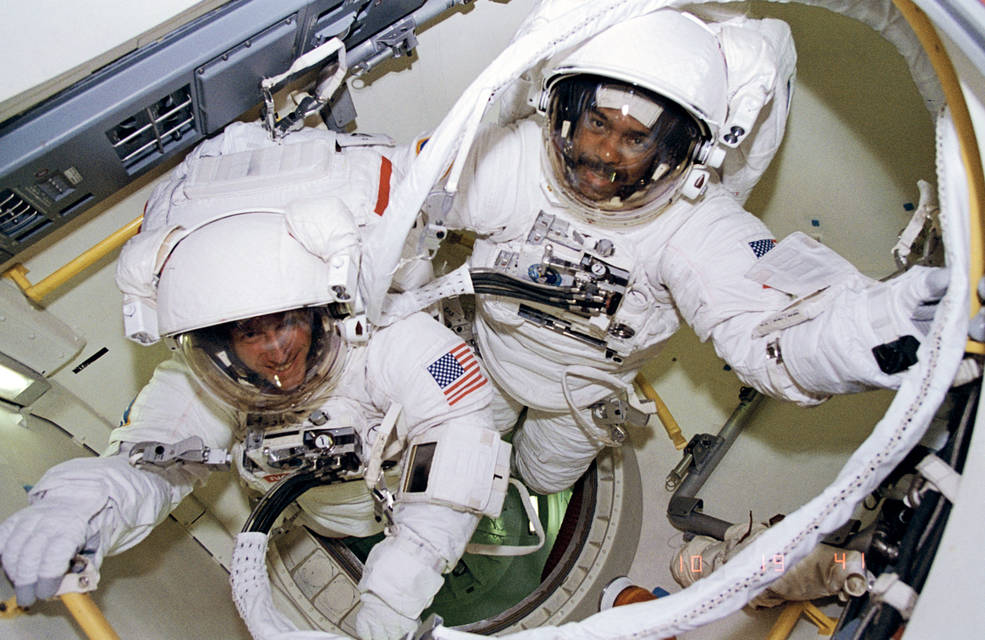
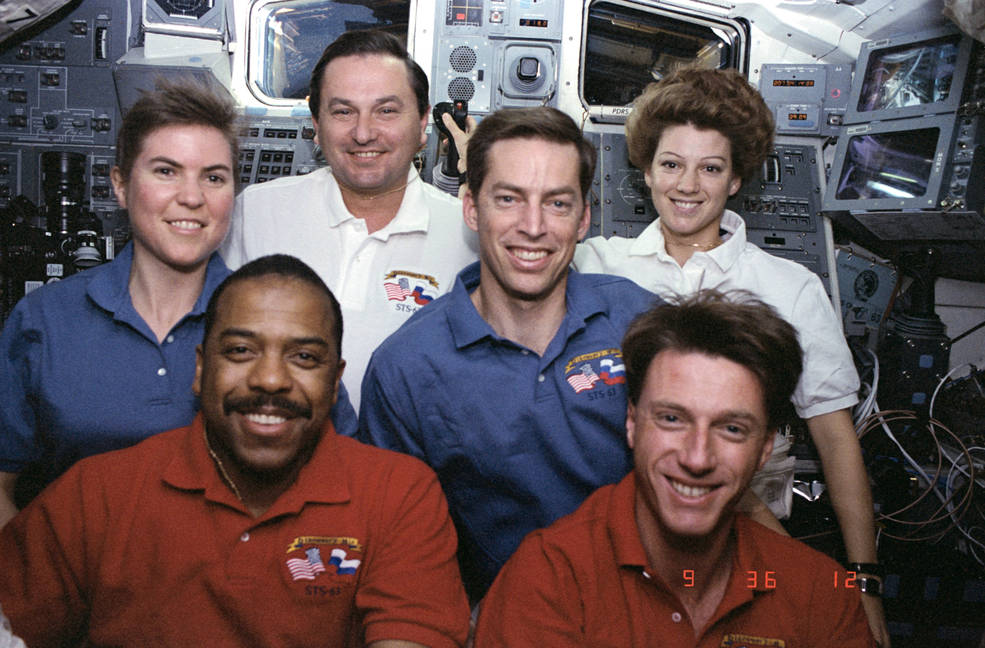
Left: Dr. Bernard A. Harris, right, preparing for a spacewalk during the STS-63 mission. Right: Harris, front row left, with the rest of the STS-63 crew on space shuttle Discovery’s flight deck.
Aeronautical engineer Winston E. Scott, selected as a NASA mission specialist astronaut in 1992, completed his first spaceflight aboard the space shuttle Endeavour in January 1996. During the nine-day STS-72 mission, Scott participated in a 6-hour 54-minute spacewalk to test tools and techniques planned for use during the assembly of the ISS. The six-person crew retrieved the NASDA Space Flyer Unit, a satellite launched in March 1995 to conduct independent materials science, biology, engineering, and astronomy research. The crew also deployed and two days later retrieved the Spartan-206 free-flyer satellite that carried four technology demonstrations and science experiments.
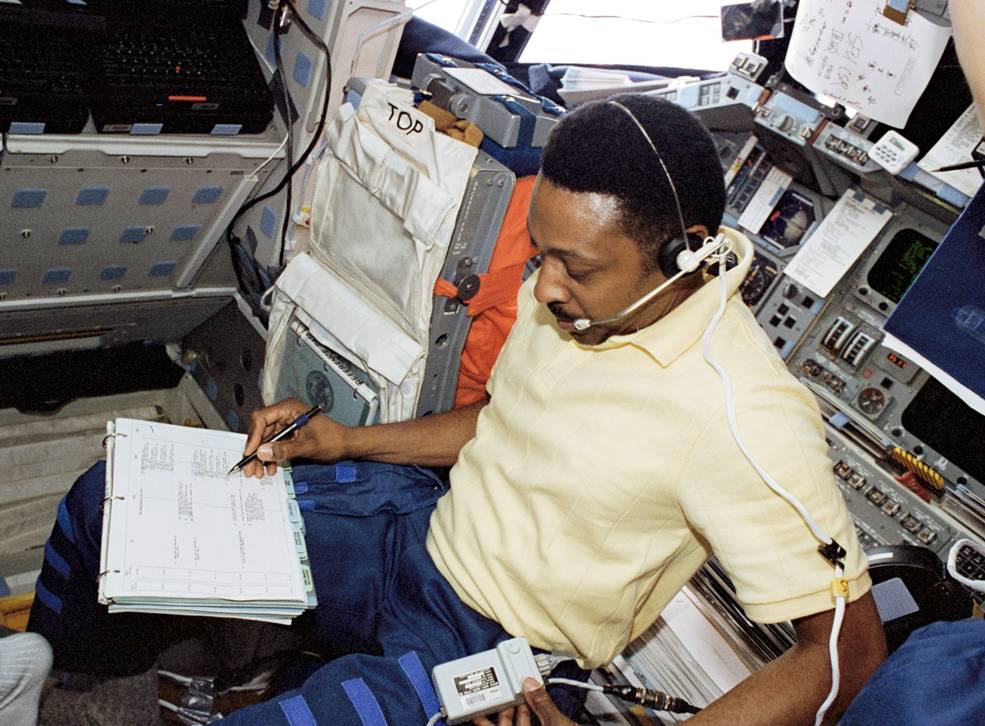
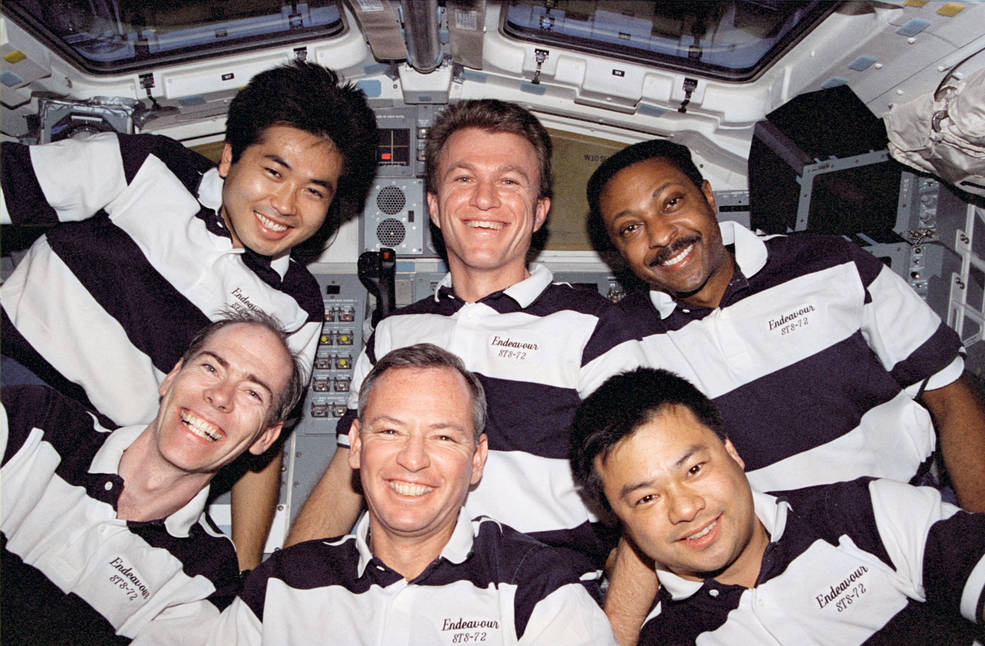
Left: Mission Specialist Winston E. Scott reviews rendezvous procedures on space shuttle Endeavour’s flight deck. Right: Scott, upper right, with the rest of the STS-72 crew.
For his second and final mission, Scott returned to space in November 1997 aboard the space shuttle Columbia. During the 16-day STS-87 mission, Scott participated in two spacewalks, bringing his total spacewalking experience to more than 22 hours. The crew conducted nine experiments in materials science, combustion science, and fundamental physics as part of the fourth U.S. Microgravity Payload. Scott retired from NASA in 1999 to return to his alma mater, Florida State University, as vice-president for student affairs.
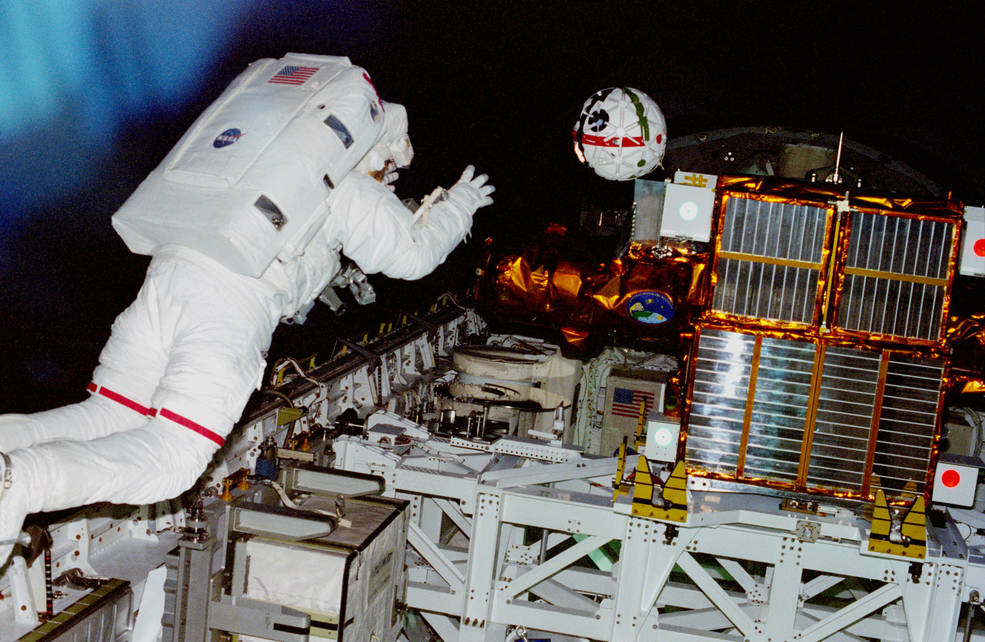
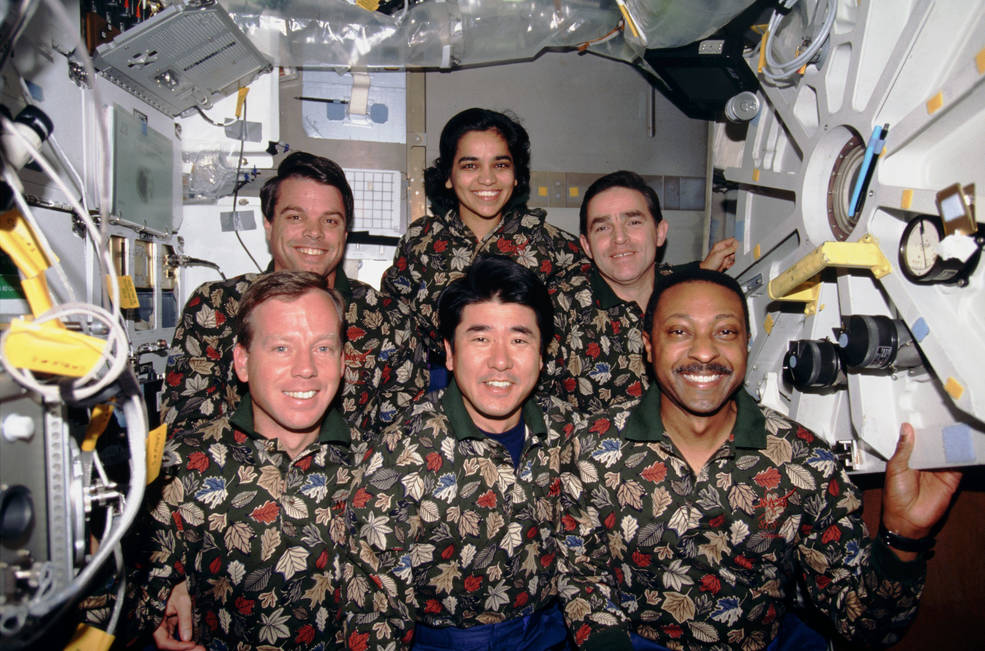
Left: Winston E. Scott deploys a prototype free-flying experiment during a spacewalk on the STS-87 mission. Right: Scott, lower right, with his STS-87 crewmates in space shuttle Columbia’s middeck.
Selected as a NASA astronaut in 1994, aeronautical engineer Robert L. “Beamer” Curbeam made his first trip into space aboard space shuttle Discovery in August 1997 during the STS-85 mission. With study of the Earth the main goal of the 12-day flight, the crew deployed and retrieved the Cryogenic Infrared Spectrometers and Telescopes for the Atmosphere-Shuttle Pallet Satellite-2 (CRISTA-SPAS-2) spacecraft, a joint venture between NASA and the German space agency. The three telescopes and four spectrometers aboard CRISTA-SPAS-2 spent more than 200 hours of free flight observing the Earth.
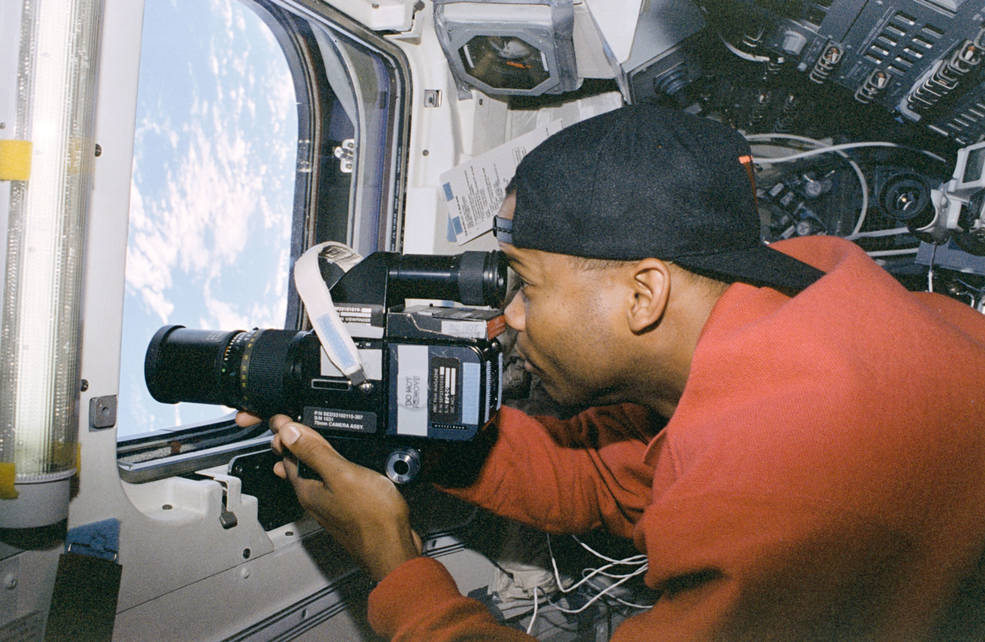
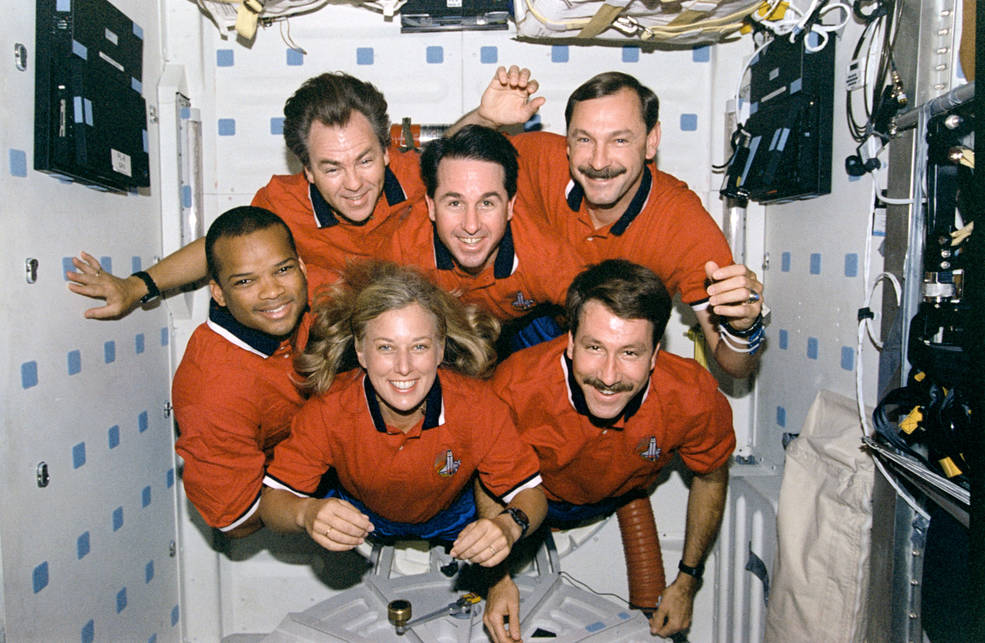
Left: Mission Specialist Robert L. “Beamer” Curbeam photographs the Earth through one of space shuttle Discovery’s overhead windows. Right: Curbeam, left, posing for the inflight photo with the STS-85 crew.
On his second flight in space, Curbeam launched aboard space shuttle Atlantis in February 2001. As a crew member on the 13-day STS-98 mission, Curbeam participated in the installation of the U.S. Laboratory module Destiny on the ISS, becoming the first African-American astronaut to visit the orbital facility. He conducted three spacewalks totaling nearly 20 hours to complete external connections between the ISS and Destiny.
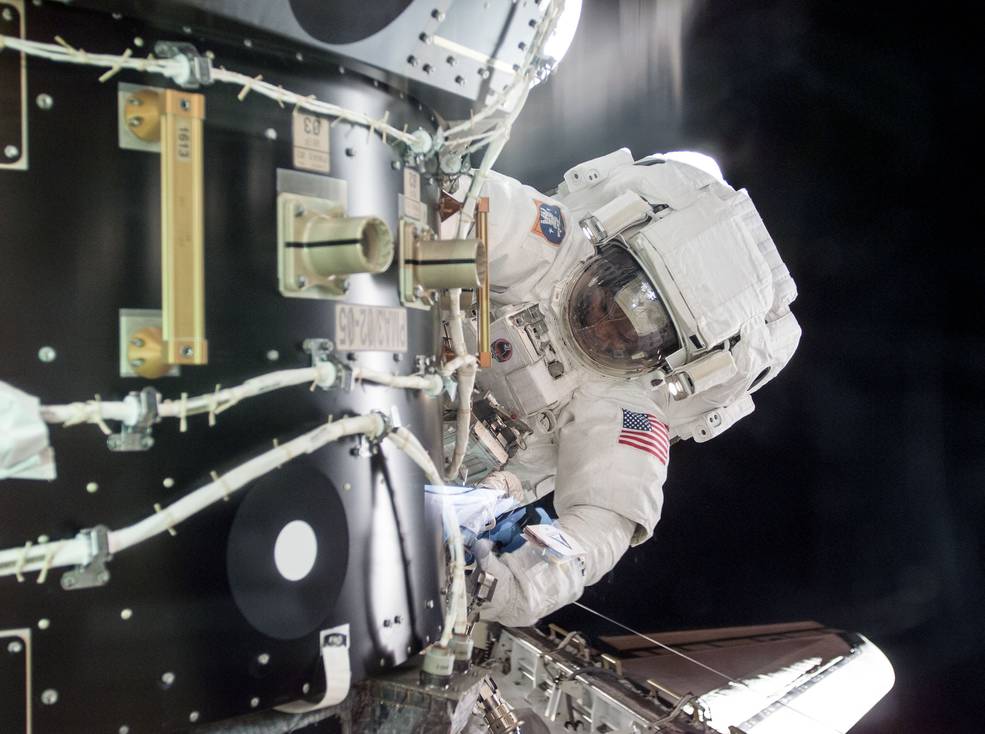
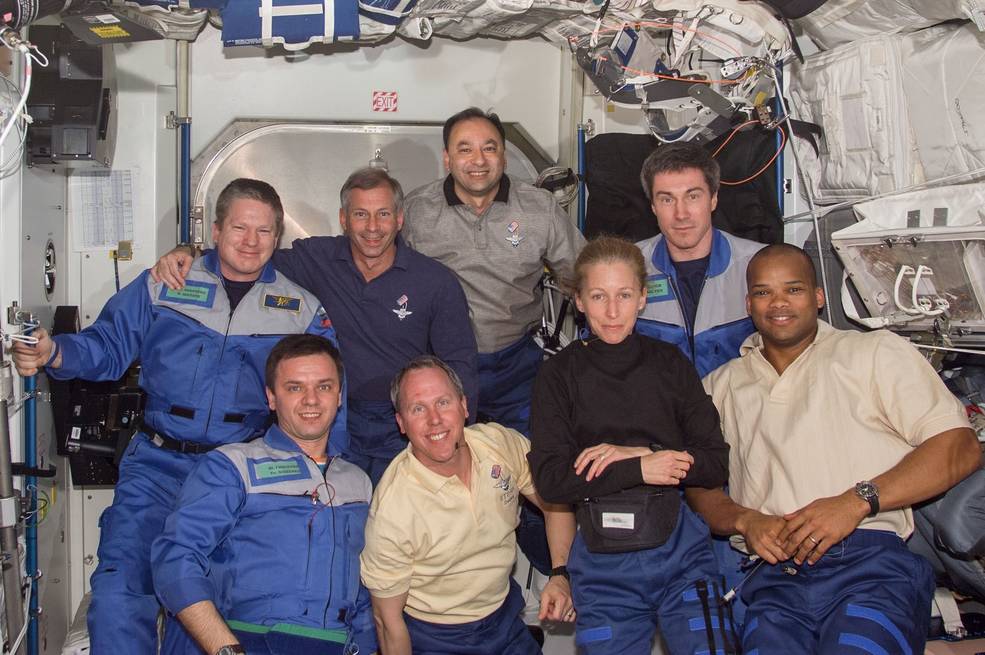
Left: Robert L. “Beamer” Curbeam during the second STS-98 spacewalk to install the Destiny U.S. Laboratory module onto the International Space Station. Right: Curbeam, right, with the STS-98 and Expedition 1 crews.
On his third and final flight, Curbeam returned to space, and to the ISS, in December 2006, as part of the STS-116 crew aboard space shuttle Discovery. The 13-day flight marked the first time that two African-American astronauts flew on the same mission. The crew installed the P5 truss segment on the ISS, with Curbeam completing four spacewalks to help accomplish the task. With his previous spacewalking experience, Curbeam holds the record among African-American astronauts for the most number of spacewalks, seven, and the most spacewalking time, 45 hours 34 minutes. Curbeam retired from NASA in 2007 and remained active in space-related activities.
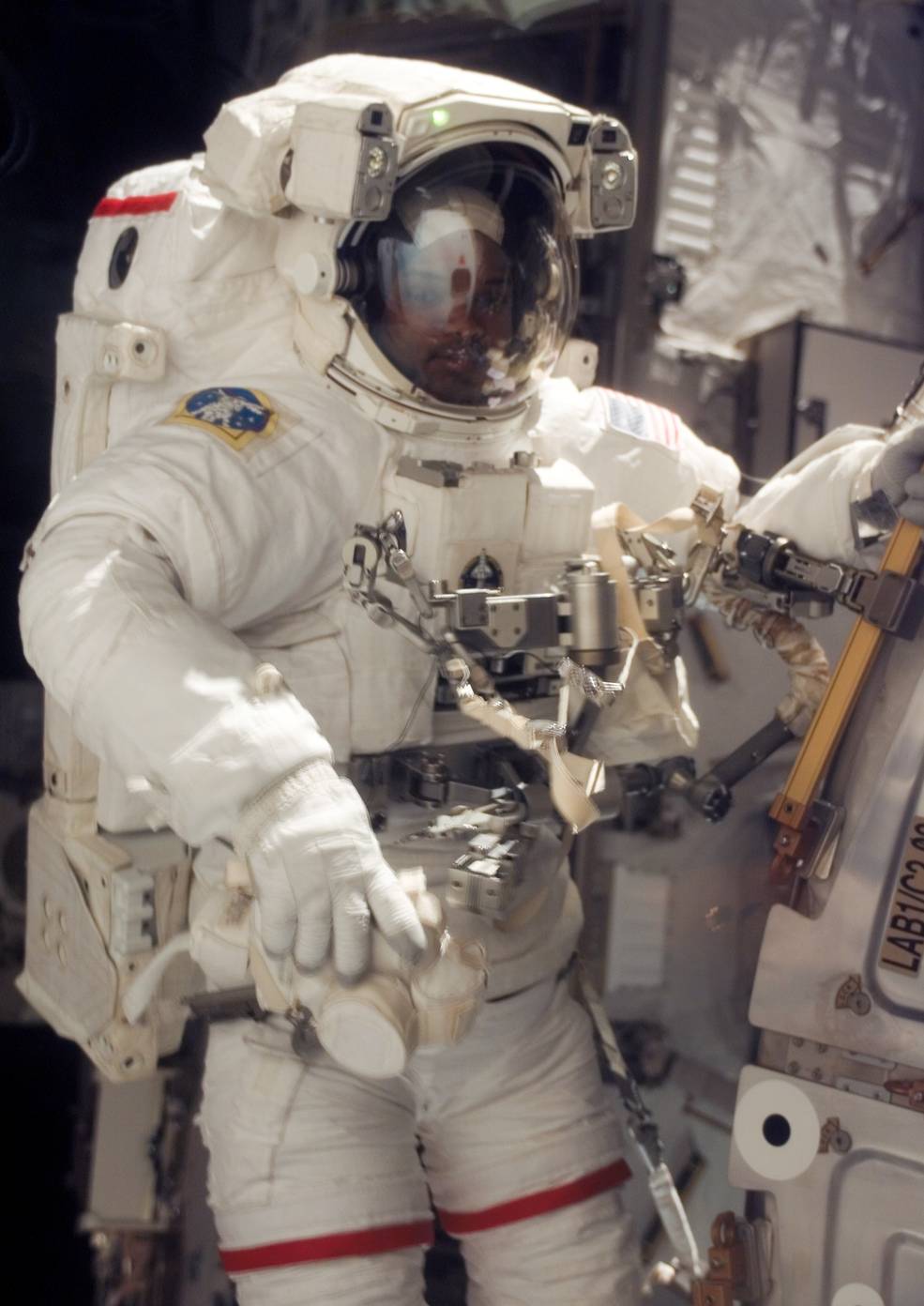
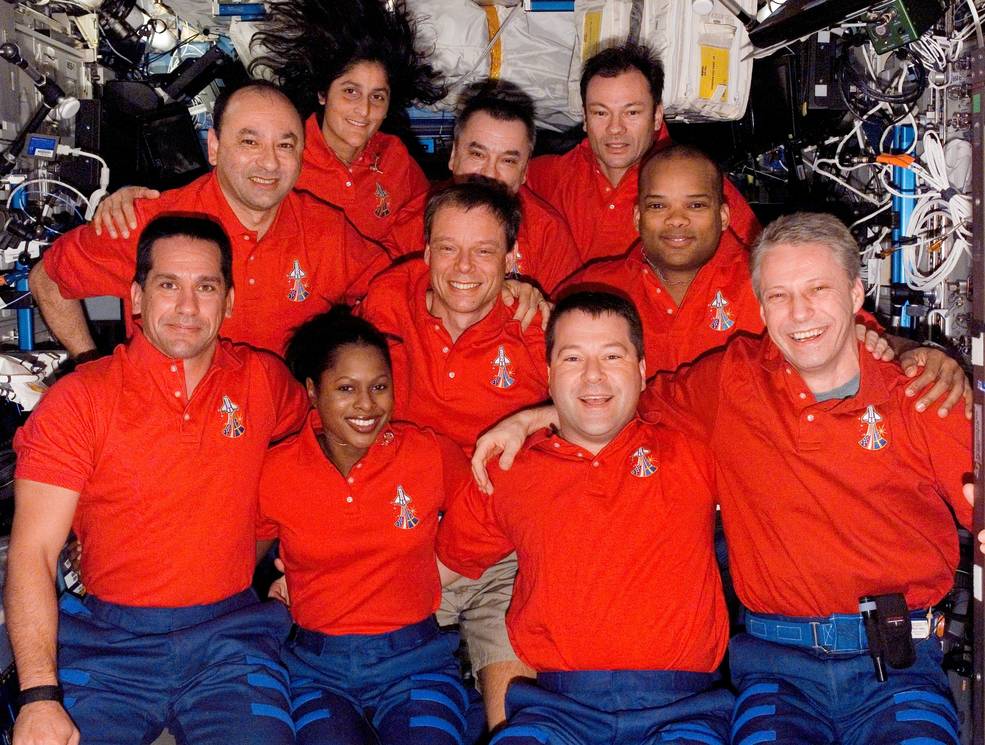
Left: Robert L. “Beamer” Curbeam during the second STS-116 spacewalk to install the P5 truss segment onto the International Space Station. Right: Curbeam, middle row at right, with the STS-116 and Expedition 14 crews.
Physicist Michael P. Anderson joined NASA’s astronaut corps in 1994 and made his first flight in space in January 1998 aboard the space shuttle Endeavour. As a mission specialist aboard STS-89, the eighth mission to dock with the space station Mir, Anderson was the first and only African-American astronaut to visit the Russian orbital facility. He also conducted scientific experiments in the double Spacehab module during the 9-day mission.
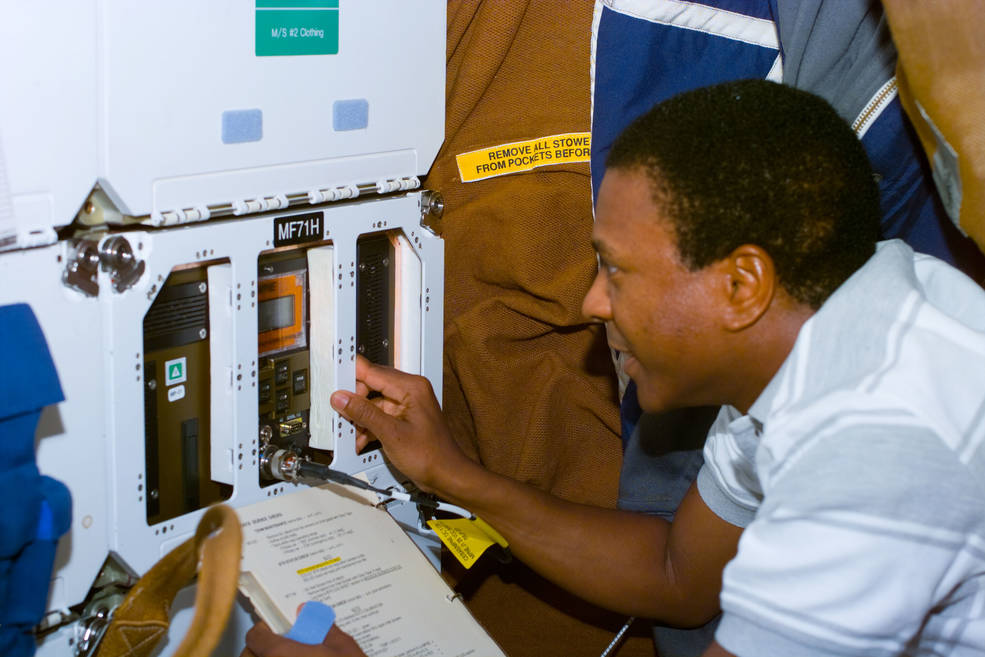
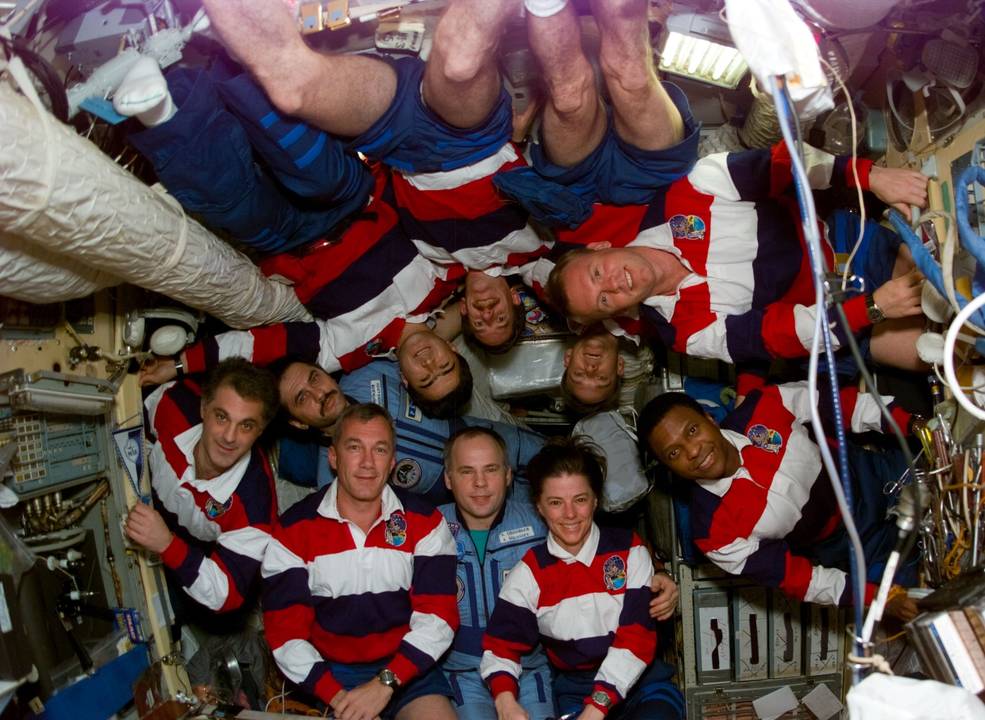
Left: Michael P. Anderson working on an experiment in the middeck of space shuttle Endeavour. Right: Anderson, lower right, with the STS-89 and Mir Expedition 24 crews posing for the inflight crew photo in Mir’s base block module.
Anderson’s next spaceflight came in January 2003, the 16-day STS-107 research mission aboard space shuttle Columbia. With Anderson serving as overall payload commander, the seven-member crew split into two teams to work around the clock on more than 80 experiments in the fields of Earth and space science, advanced technology, and astronaut health and safety. Tragically, about 16 minutes before landing at KSC, space shuttle Columbia broke apart, with loss of the vehicle and the crew. Investigators traced the cause to a piece of foam that fell off the external tank during launch and struck Columbia’s left wing, creating an opening through which superheated gases during reentry impinged on the orbiter’s airframe, causing the vehicle to disintegrate.
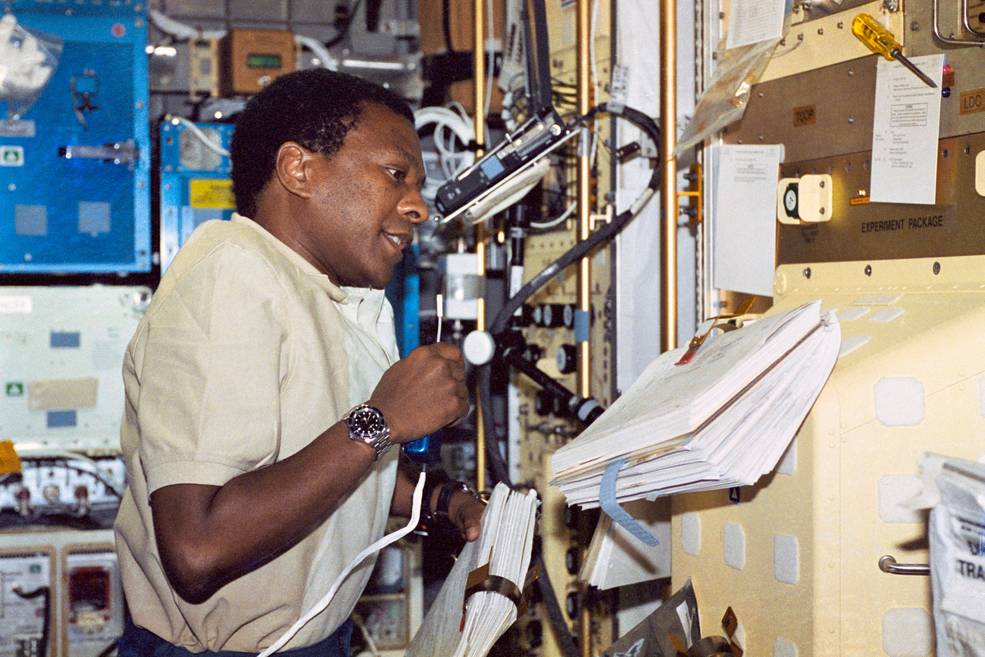
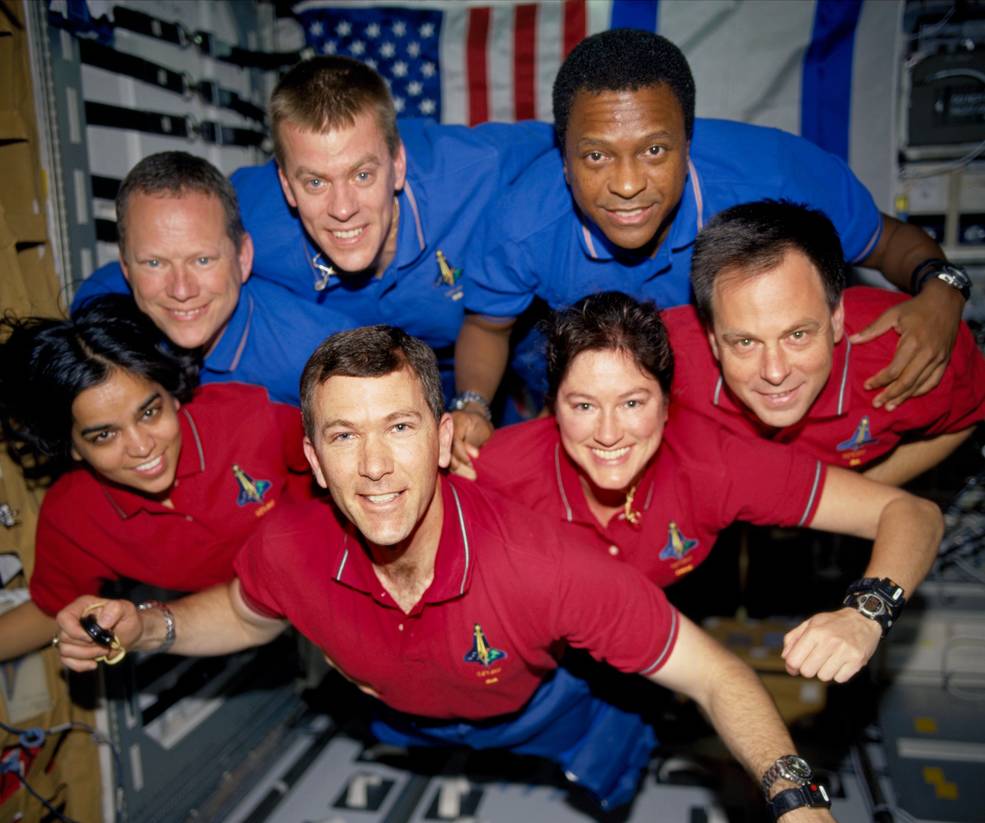
Left: Michael P. Anderson working on a combustion experiment in the Spacehab research module during the STS-107 mission. Right: Anderson, at upper right, with the rest of the STS-107 crew posing for the inflight photograph in the Spacehab module.
Selected by NASA as an astronaut in 1996, aerospace engineer Stephanie D. Wilson completed her first mission in July 2006 aboard the space shuttle Discovery. The 13-day STS-121 mission, the second return to flight mission after the Columbia accident, resumed outfitting of the ISS, including returning its crew size to three. Wilson handled much of the robotics operations, including transferring the Multi-Purpose Logistics Module (MPLM) Leonardo from the shuttle’s cargo bay to the ISS and back again. The MPLM delivered the first of three scientific refrigerator/freezers and other facilities to the ISS to expand its research capabilities.
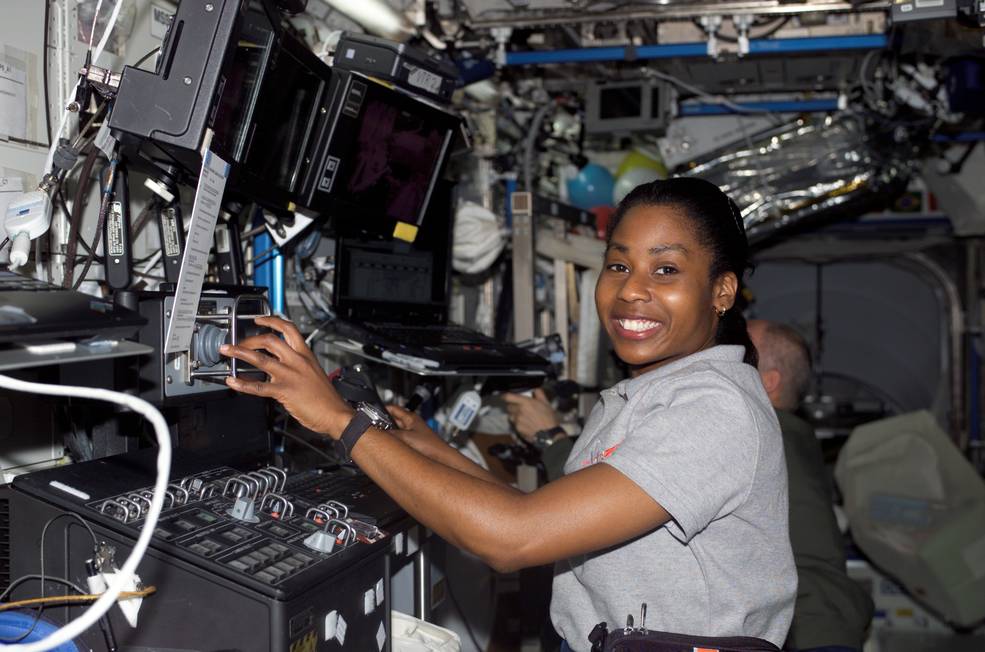
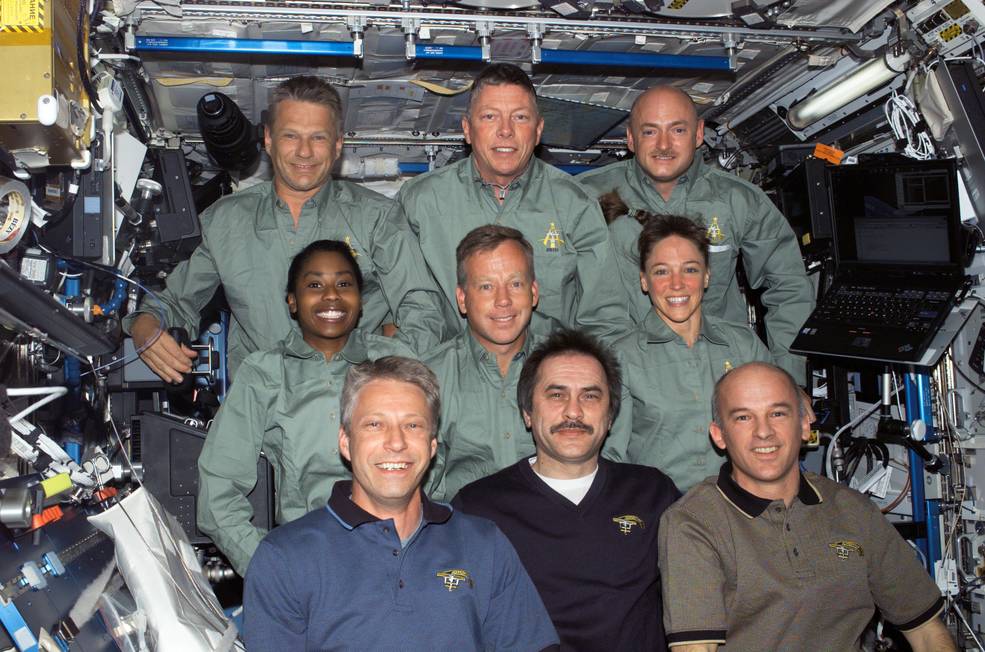
Left: Stephanie D. Wilson operating the controls of the International Space Station’s robotic work station in the Destiny module. Right: Wilson, middle row left, with the STS-121 and Expedition 13 crews.
On her second spaceflight in October 2007, Wilson returned to the ISS, this time on the STS-120 mission of space shuttle Discovery. During the 15-day flight, the crew delivered the Harmony Node 2 module to the ISS, with Wilson robotically assisting in the installation of the new element that enabled the subsequent addition of the European and Japanese research modules.
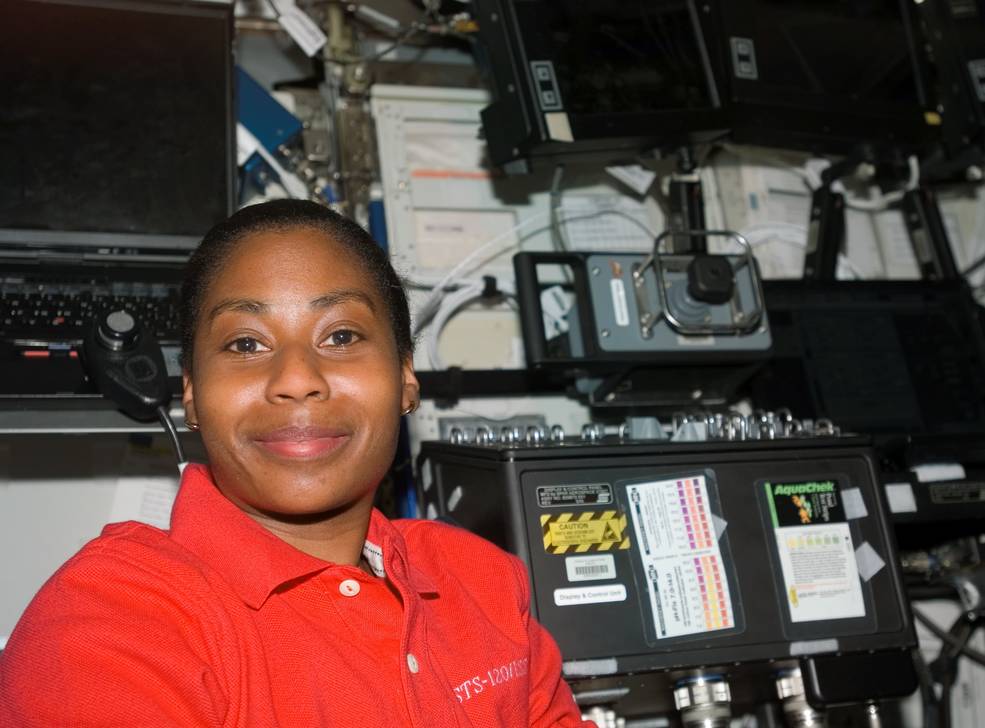
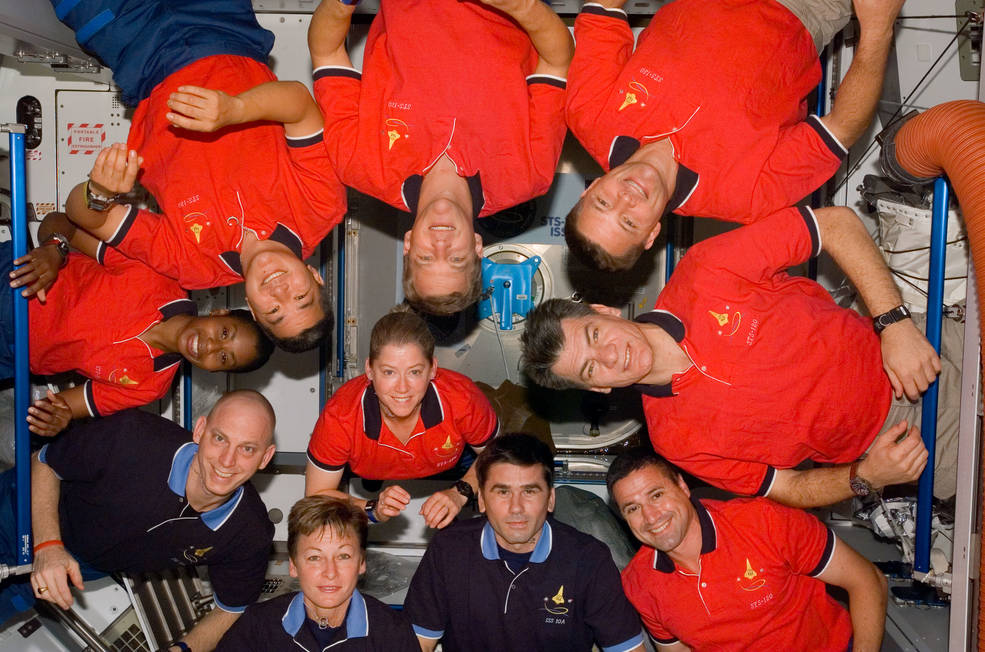
Left: Stephanie D. Wilson posing in front of the robotic workstation in the International Space Station’s Destiny module. Right: Wilson, at left, posing with the STS-120 and Expedition 16 crews.
In April 2010, Wilson made her third trip into space and her third visit to the ISS. During the 15-day STS-131 mission, the MPLM Leonardo in space shuttle Discovery’s cargo bay delivered three research facilities and other cargo to the ISS, with Wilson using the space station’s robotic arm to transfer the MPLM back and forth. During STS-131, for the first, and so far only, time four women were in space at the same time, three members of the shuttle crew and the fourth a member of the Expedition 23 crew. To date, Wilson has accumulated 43 days of spaceflight time over the course of her three missions. She remains on active status in the astronaut corps awaiting flight assignments.
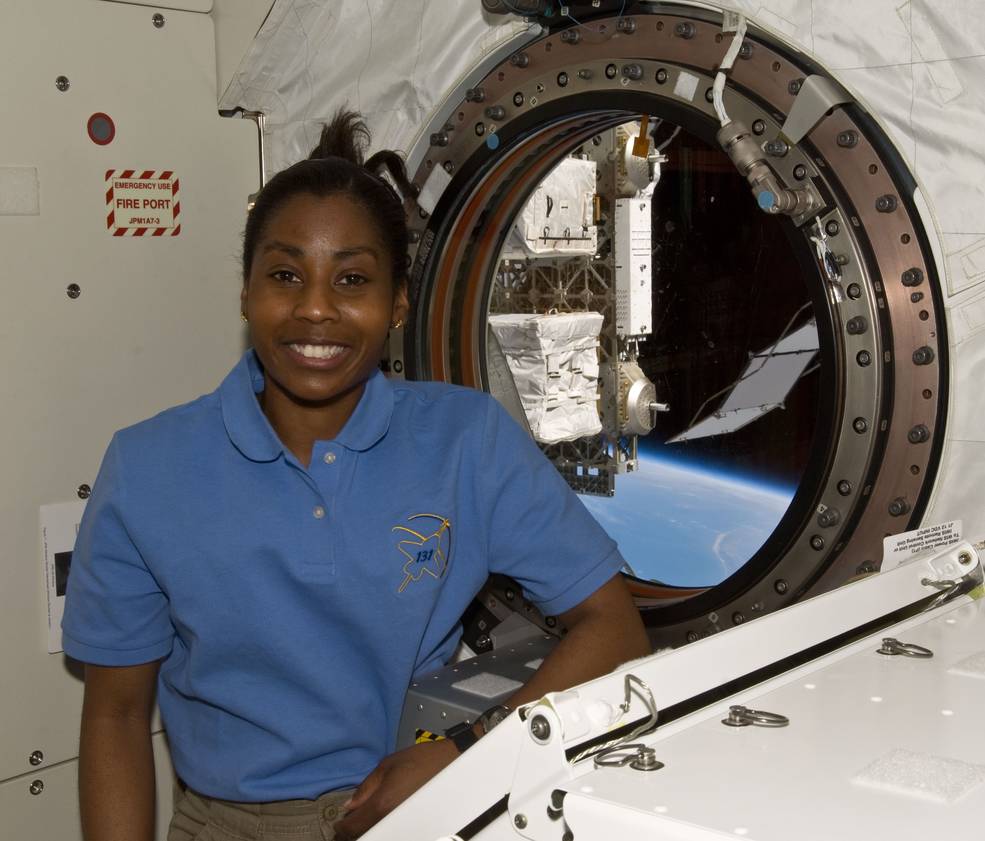
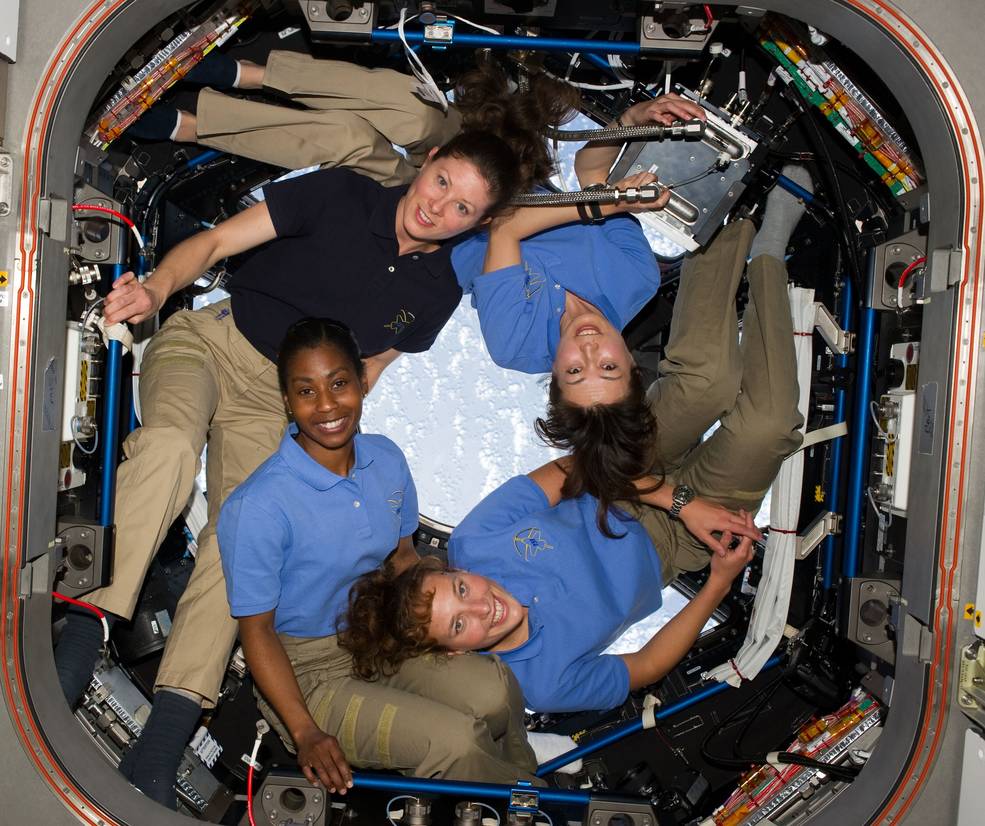
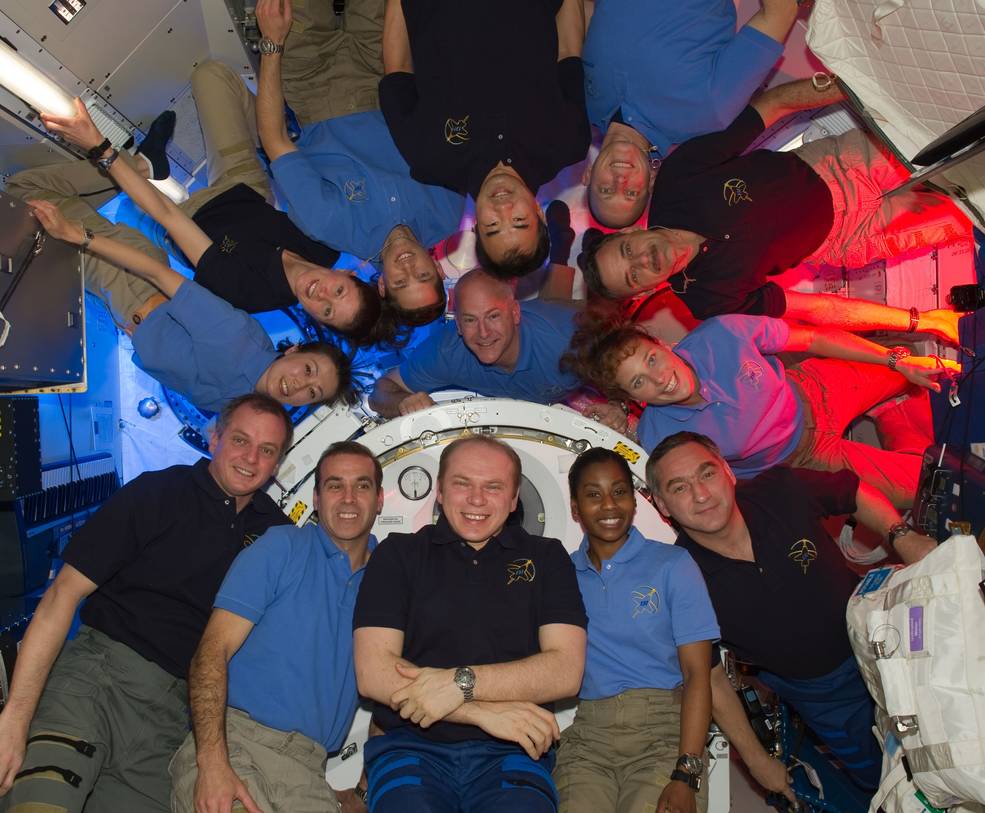
Left: Stephanie D. Wilson posing in front of one of the two windows of the International Space Station’s Kibo module. Middle: Wilson, left, posing in the Cupola with three other women astronauts during the STS-131 mission, the first and so far only time that four women flew in space at the same time. Right: Wilson, front row second from right, posing with the STS-131 and Expedition 23 crews in Kibo.
Selected in the astronaut class of 1996, electrical engineer Joan E. Higginbotham completed her single spaceflight in December 2006, the 13-day STS-116 mission aboard space shuttle Discovery. With Curbeam on the same crew, this marked the first time that two African-American astronauts flew in space at the same time. Higginbotham operated the space station’s remote manipulator system to assist in the installation of the P5 truss segment to the ISS. She retired from NASA in 2007 to pursue a career in the private sector.
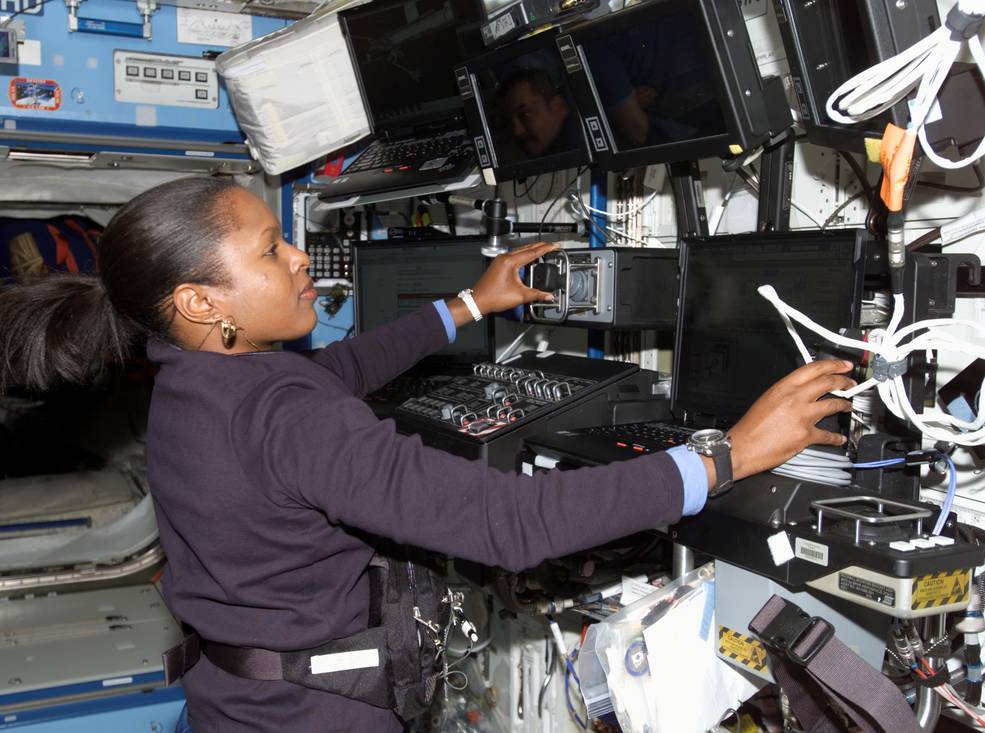
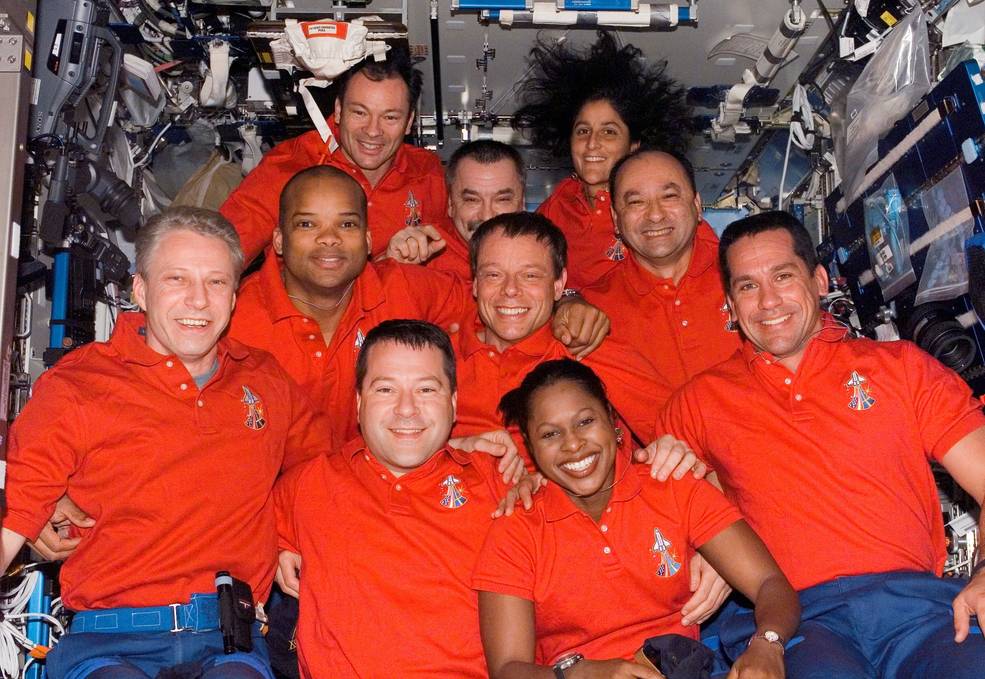
Left: Joan E. Higginbotham operating the controls of the International Space Station’s robotic work station in the Destiny module. Right: Higginbotham, front row to right of center, in the Destiny module with the STS-116 and Expedition 14 crews, the first time that two African-American astronauts flew in space at the same time.
After his selection by NASA as an astronaut in 2000, physicist and aeronautical engineer B. Alvin Drew made his first spaceflight aboard space shuttle Endeavour in August 2007. During the 13-day STS-118 mission, Drew and his six crewmates installed the S5 truss segment on the ISS, transferred 5,000 pounds of science experiments and other logistics from the single Spacehab module to the ISS, and returned 4,000 pounds of unneeded hardware to Earth.
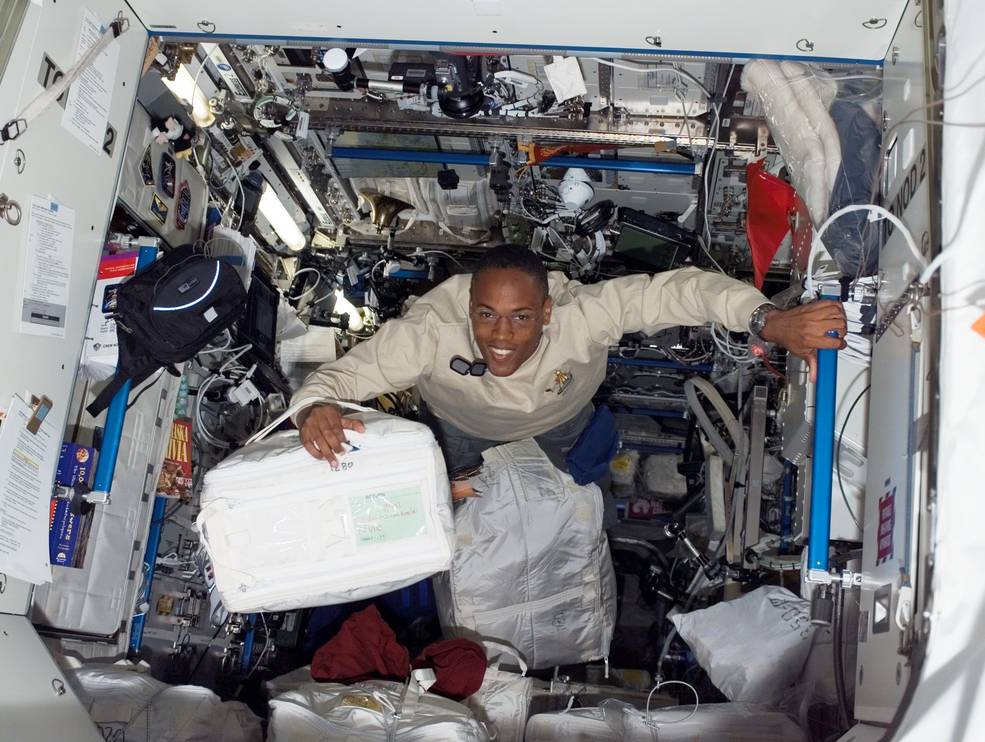
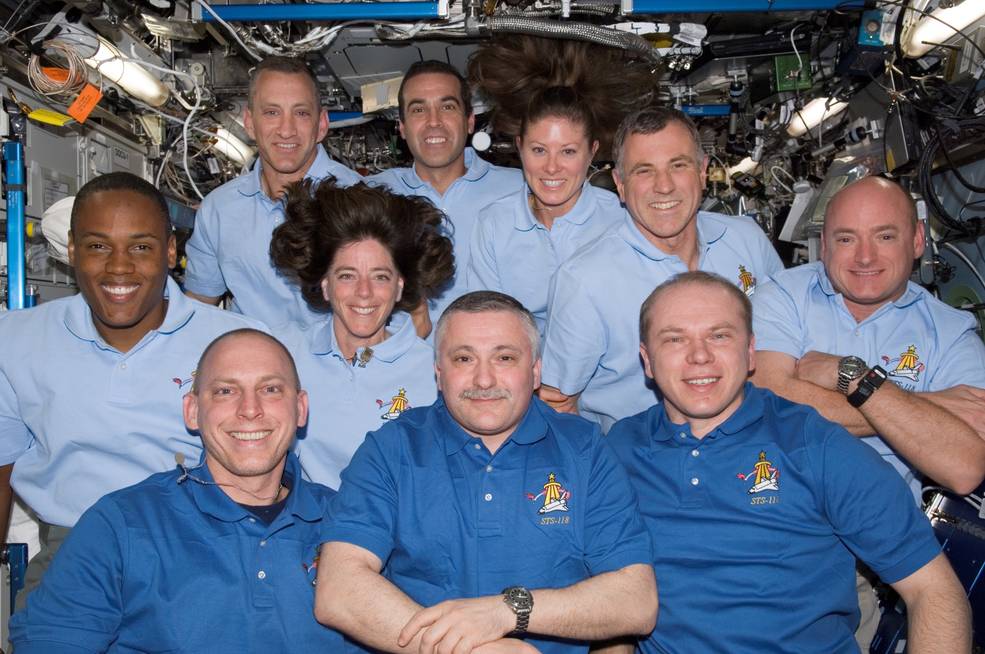
Left: B. Alvin Drew transferring equipment into the International Space Station. Right: Drew, middle row at left, with the STS-118 and Expedition 15 crews posing in the Destiny module.
On his second and final trip into space in February 2011, Drew returned to the ISS, this time on STS-133, the final flight of space shuttle Discovery. During the 13-day mission, Drew carried out two spacewalks totaling nearly 13 hours to complete a series of maintenance tasks on the station’s exterior. Engineers on the ground converted the MPLM Leonardo into a Permanent Multipurpose Module (PMM) to provide additional storage capacity for the ISS. Drew and his five crewmates installed the PMM on the orbital facility. They also added a third platform for holding external payloads onto the station’s truss segment, and brought the Robonaut-2 humanoid robot to the ISS. Drew retired from NASA in 2013.
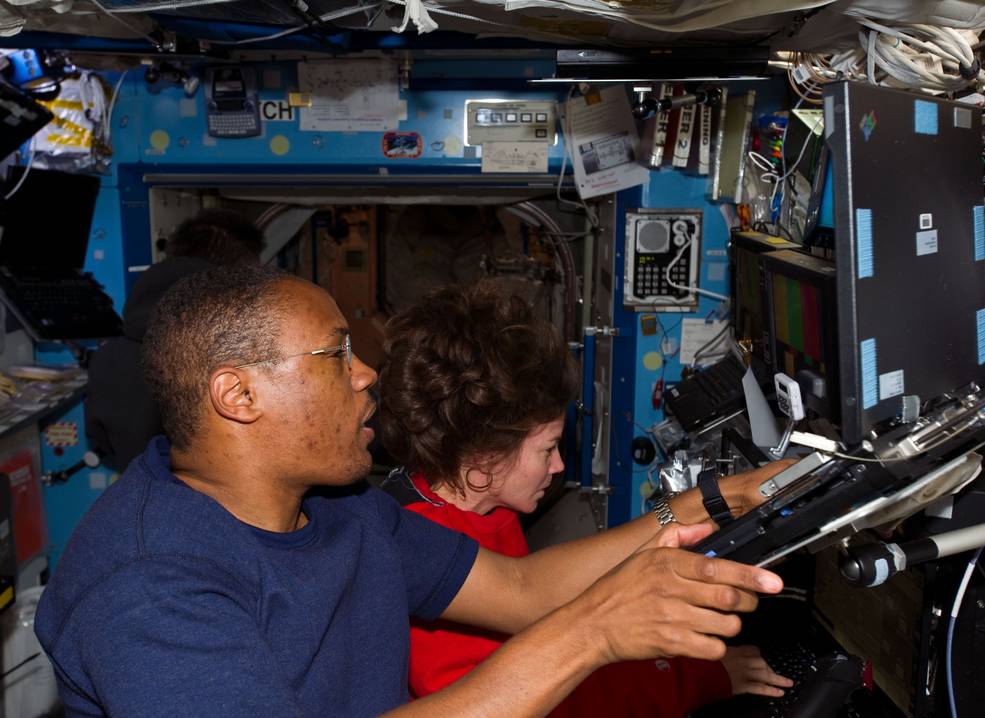
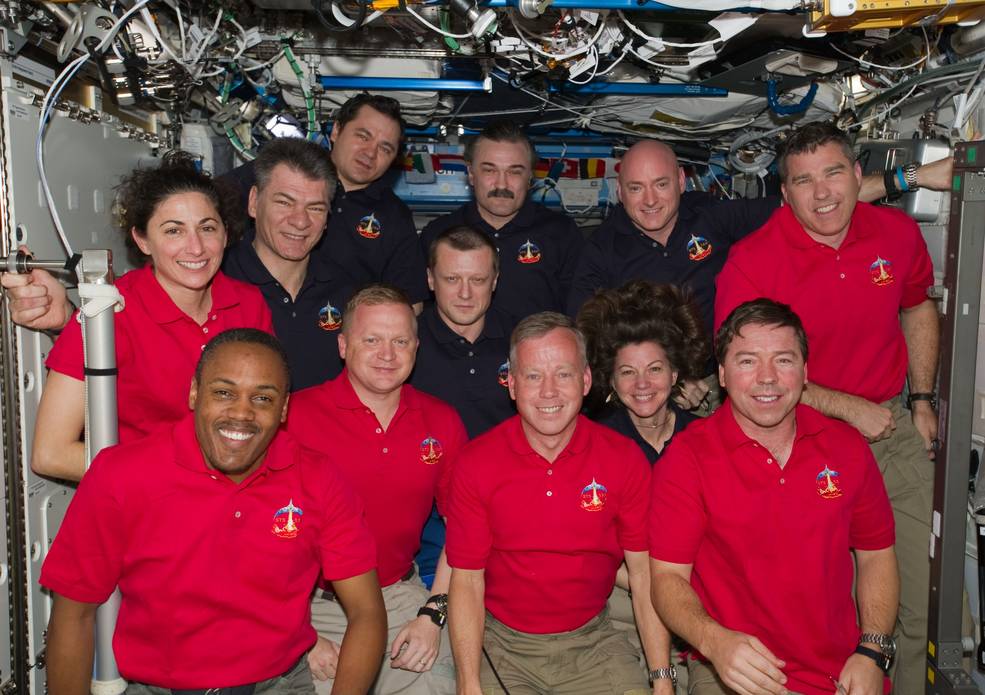
Left: B. Alvin Drew operating the space station’s robotic work station in the International Space Station’s Destiny module. Right: Drew, front row at left, with his STS-133 and Expedition 26 crewmates.
Chemist and former National Football League player Leland D. Melvin, selected by NASA as an astronaut in 1998, made his first spaceflight aboard the space shuttle Atlantis in February 2008, the 13-day STS-122 mission. As a mission specialist, Melvin participated in the robotic operations to install the European Space Agency’s Columbus laboratory module on the International Space Station.
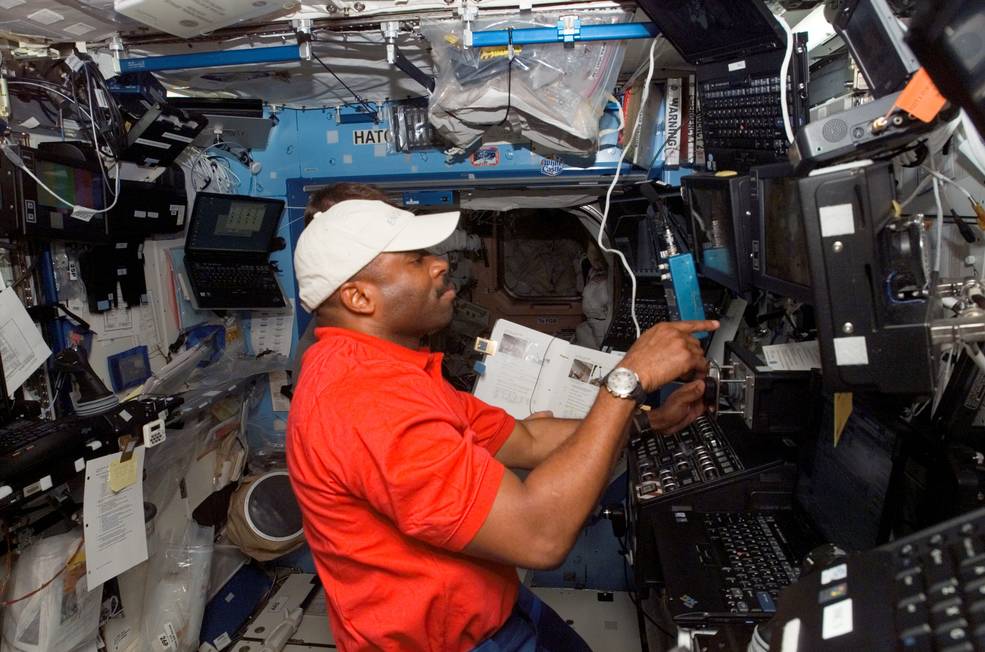
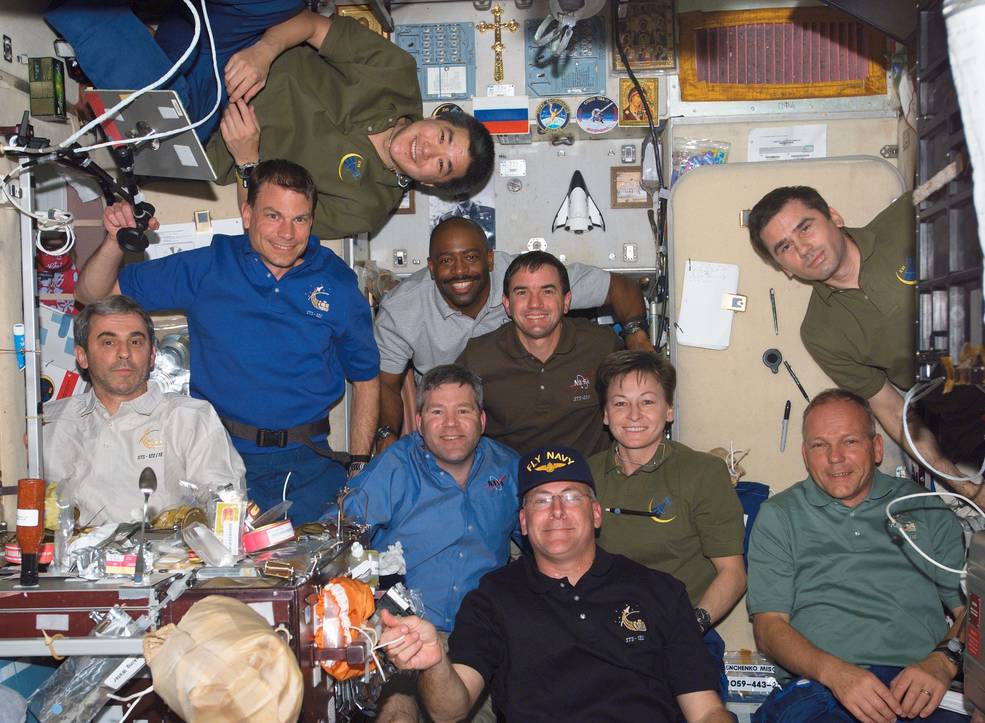
Left: Leland D. Melvin operating the space station’s robotic work station in the International Space Station’s Destiny module. Right: Melvin, at center in rear, during mealtime with his STS-122 and Expedition 16 crewmates in the Zvezda service module.
Melvin returned to space and to the ISS in November 2009 aboard Atlantis. During the 11-day STS-129 mission, the crew installed two external carriers for payloads onto the station’s truss, with Melvin operating the shuttle’s robotic arm. After his second and final spaceflight, NASA managers recognized Melvin’s passion for engaging with students of all ages and named him associate administrator for the Office of Education at NASA Headquarters in 2010. He served in that position until his retirement from the agency in 2014. Melvin continues to promote human spaceflight and education.
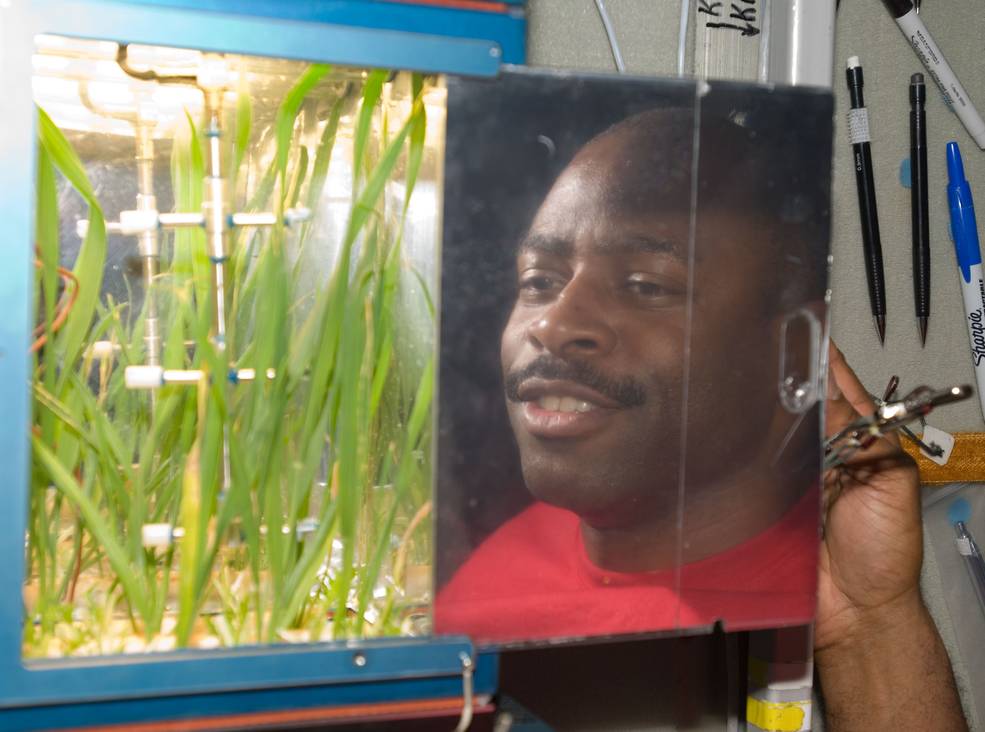
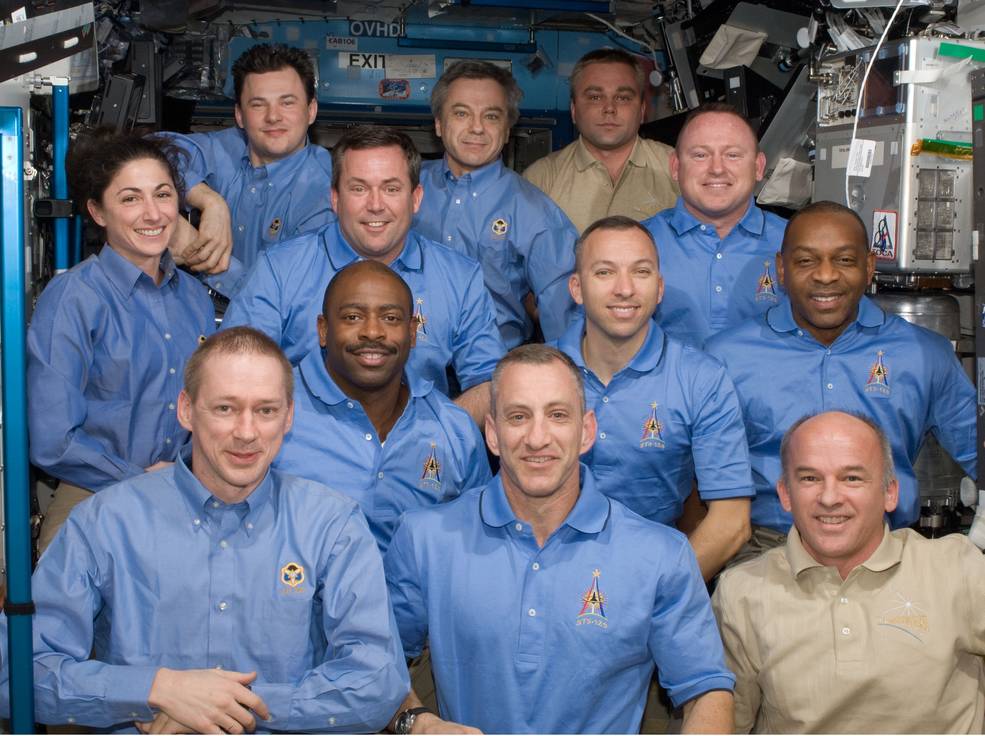
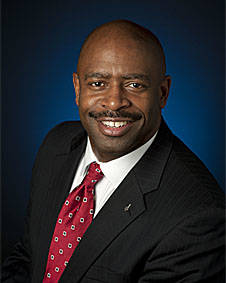
Left: Astronaut Leland D. Melvin reflected in the lid of the Lada greenhouse in the Zvezda service module. Middle: Melvin, left of center, posing with his STS-129 and Expedition 21 crewmates. Right: Official photograph of Melvin as NASA associate administrator for the Office of Education.
Selected by NASA in 2004 as an astronaut, orthopedic surgeon Dr. Robert L. “Bobby” Satcher flew his only space mission in November 2009, an 11-day flight aboard space shuttle Atlantis. As a mission specialist on the STS-129 crew, Satcher participated in the installation of two external payload carriers onto the ISS truss, including conducting two spacewalks totaling more than 12 hours. He retired from NASA in 2011 to join The University of Texas M.D. Anderson Cancer Center’s orthopedic oncology department.
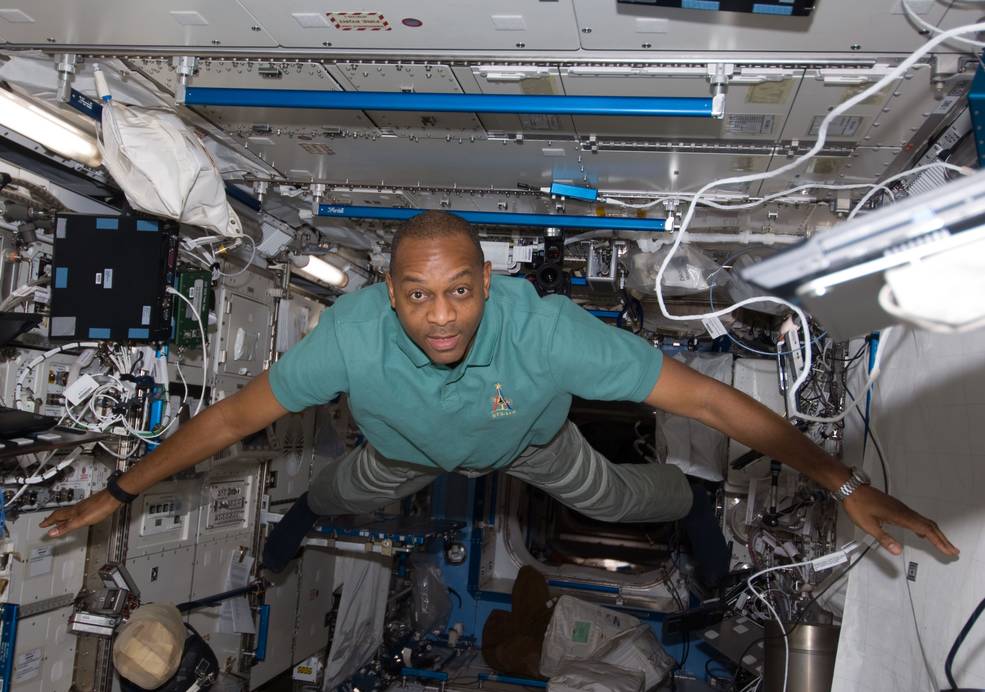
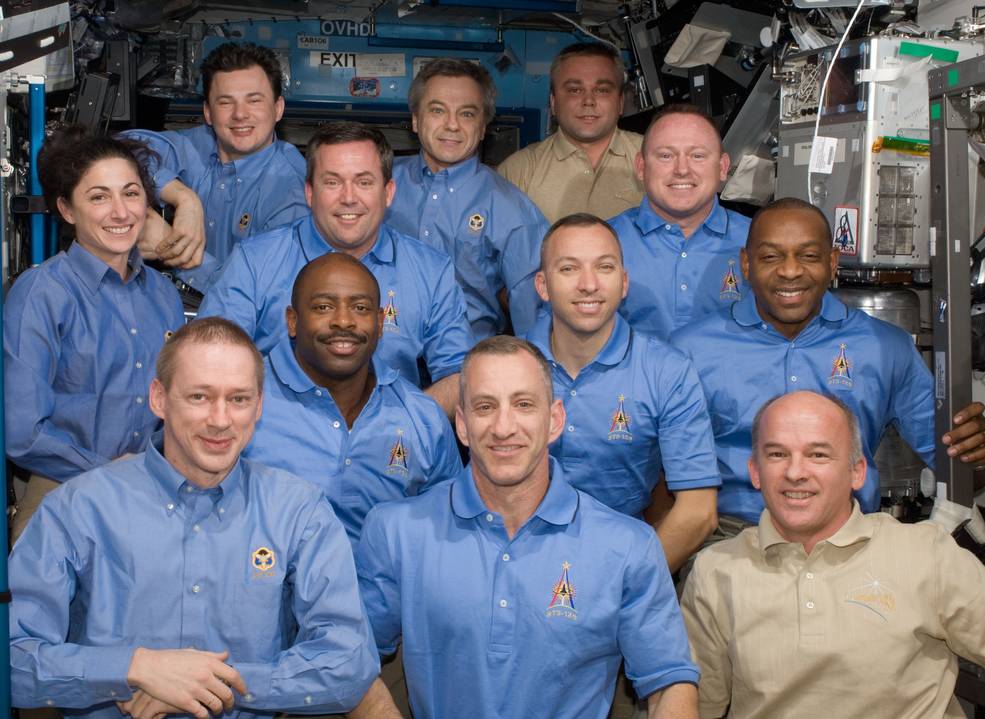
Left: Astronaut Dr. Robert L. “Bobby” Satcher floating in the International Space Station’s Destiny module. Right: Satcher, second row at right, with his STS-129 and Expedition 21 crewmates.
NASA selected U.S. Navy test pilot Victor J. Glover as an astronaut in 2013. He launched in November 2020 aboard Space Exploration Technology Corporation’s (SpaceX) commercial Crew Dragon Resilience spacecraft. The Crew 1 mission marked the first crew rotation flight of the SpaceX Crew Dragon spacecraft. Glover became the first African-American astronaut to join a long-duration expedition crew aboard the ISS, and his arrival with his three crewmates marked the first time the ISS resident crew size increased to seven people, markedly increasing the crew time available to conduct research.
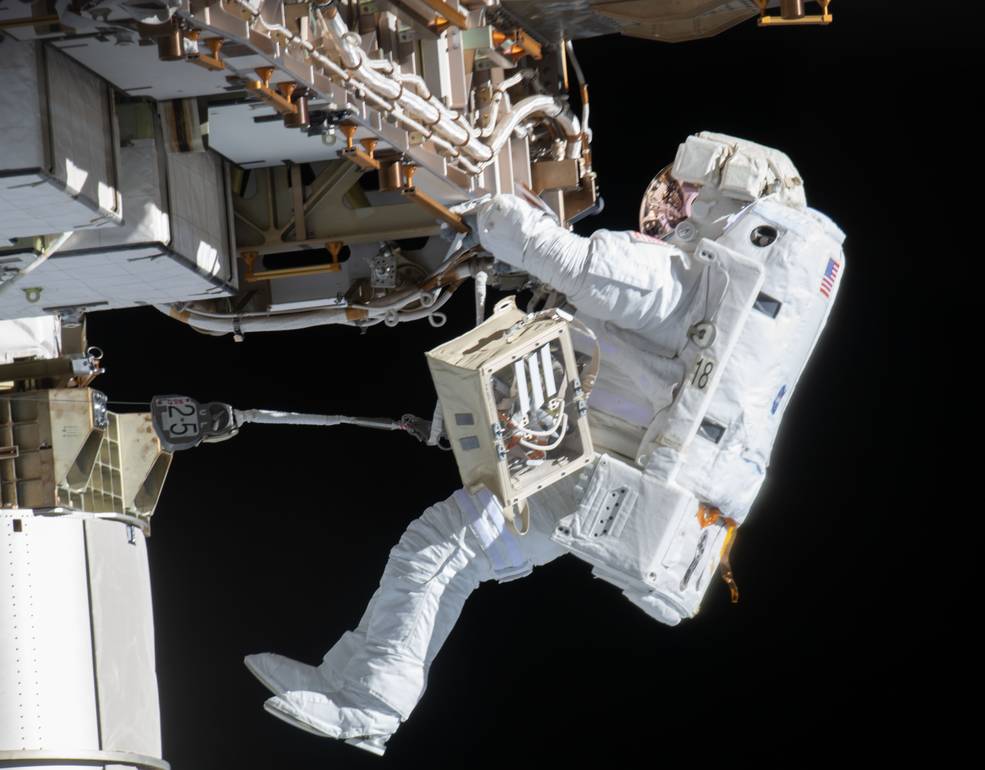
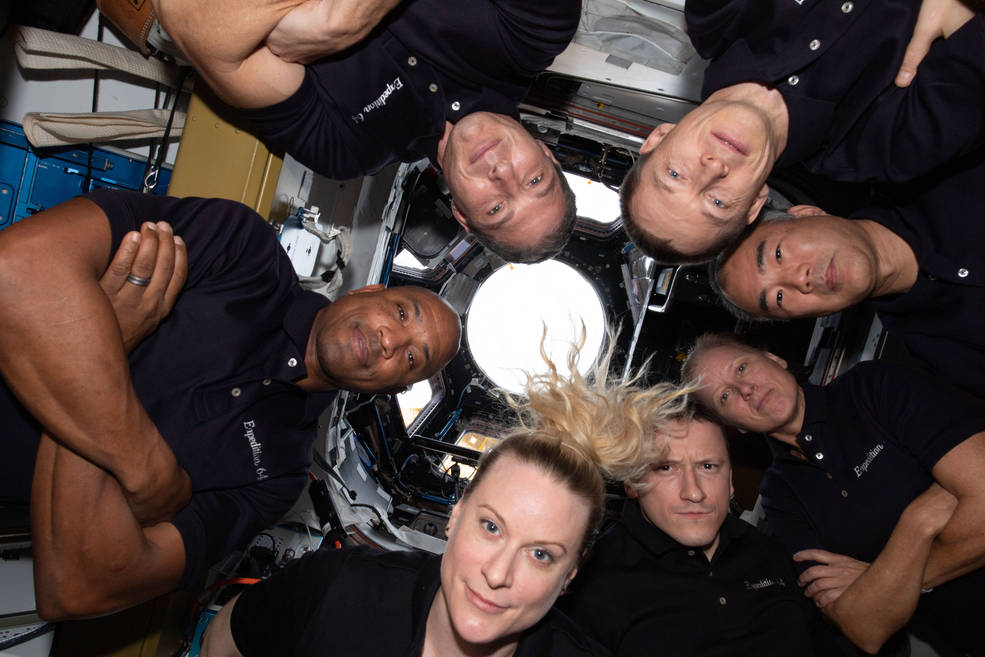
Left: Astronaut Victor J. Glover conducting a spacewalk during Expedition 64. Right: Glover, left, with his Expedition 64 crewmates in the Cupola module.
Aerospace engineer Jeanette J. Epps, selected as a NASA astronaut in 2009, is currently in training for a flight to the ISS. She is assigned to the Starliner-1 mission in 2022, the first crew rotation flight of the Boeing Corporation’s Starliner spacecraft. Epps and her three crewmates will join the expedition crew aboard the ISS for a planned six-month mission.
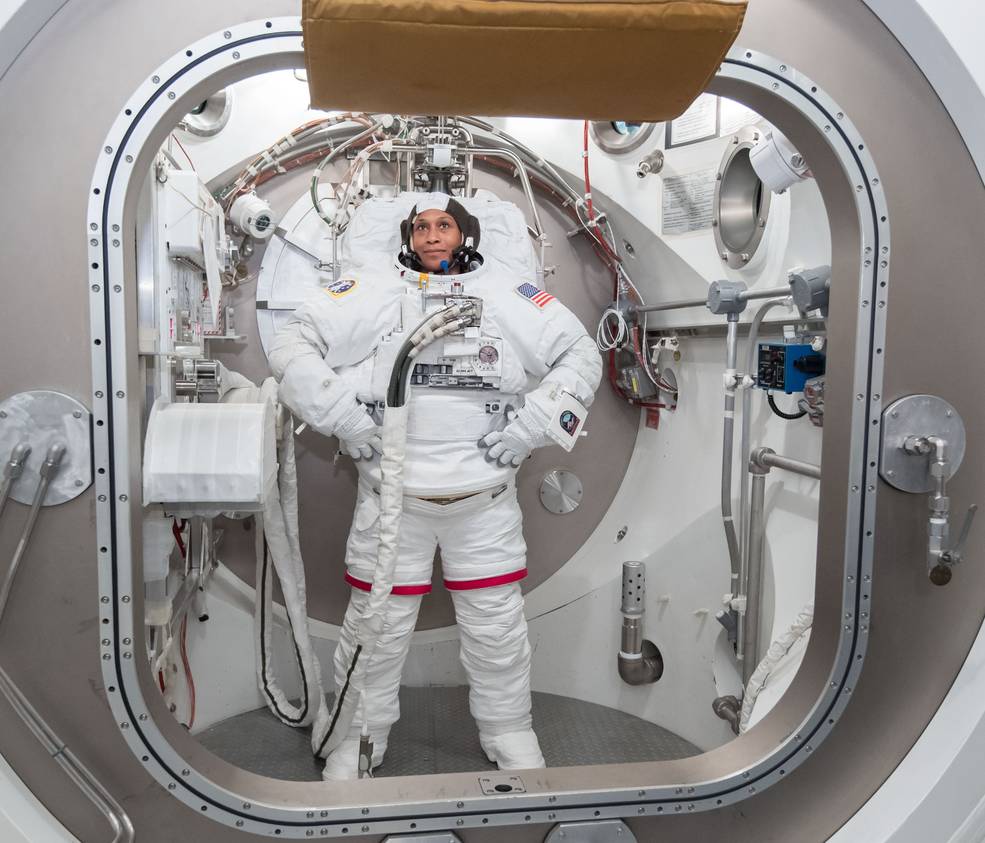
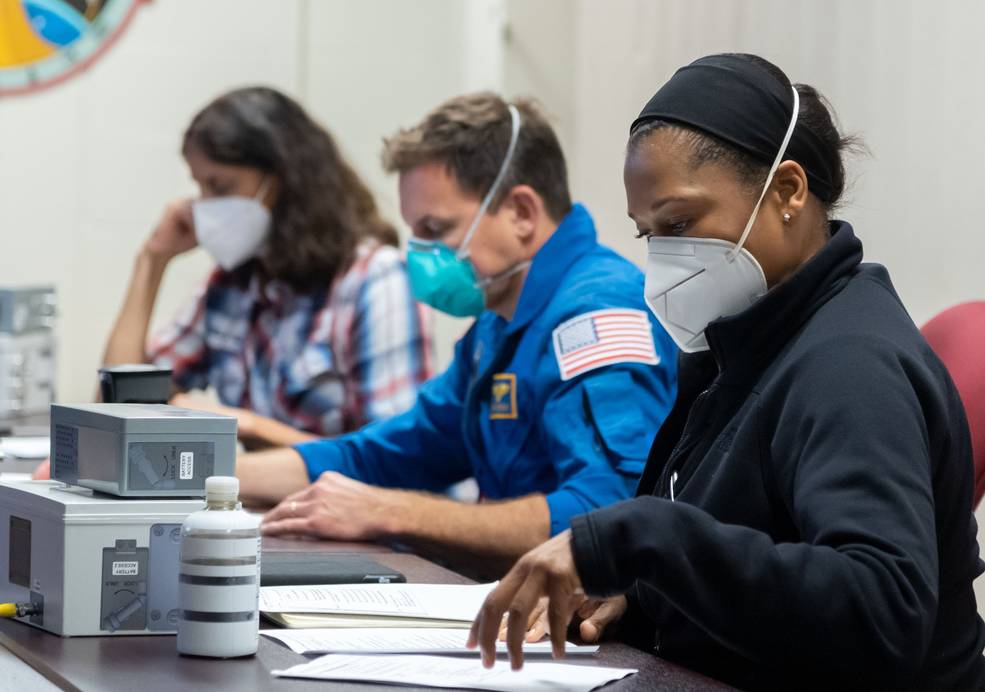
Left: Astronaut Jeanette J. Epps during spacewalk training. Right: Epps, right, with two of her Boeing Starliner-1 crewmates during training.
On Dec. 9, 2020, NASA selected 18 astronauts from its corps to form the Artemis Team, eligible for early flight assignments to exploration missions. Included on the Artemis Team are three African-American astronauts who will help pave the way for flights on and around the Moon. The three are Victor J. Glover, currently serving as a member of the Expedition 64 crew on board the ISS; geologist Jessica A. Watkins, selected as a NASA astronaut in 2017; and Stephanie D. Wilson, a veteran of three space shuttle missions to the ISS.
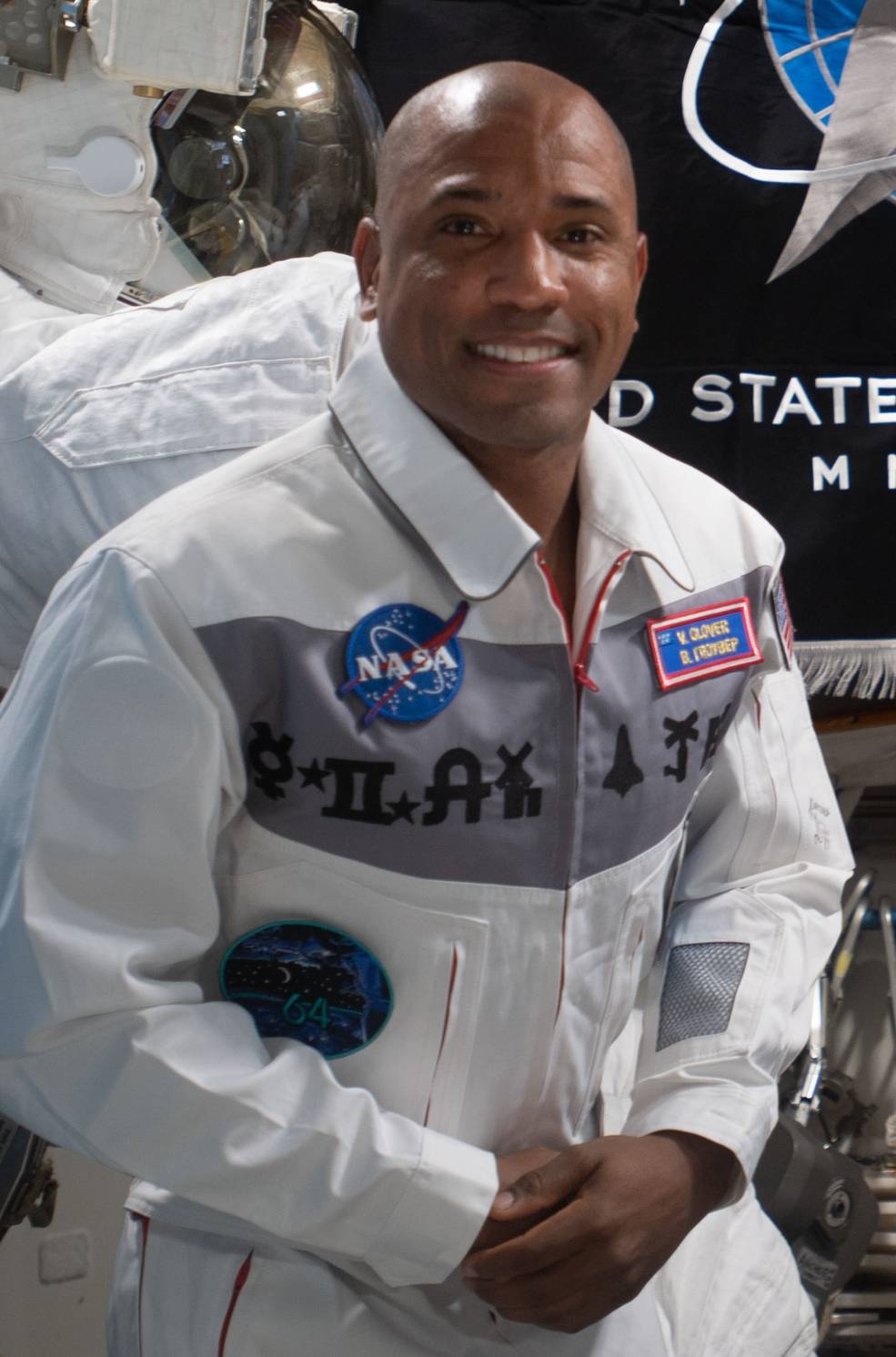
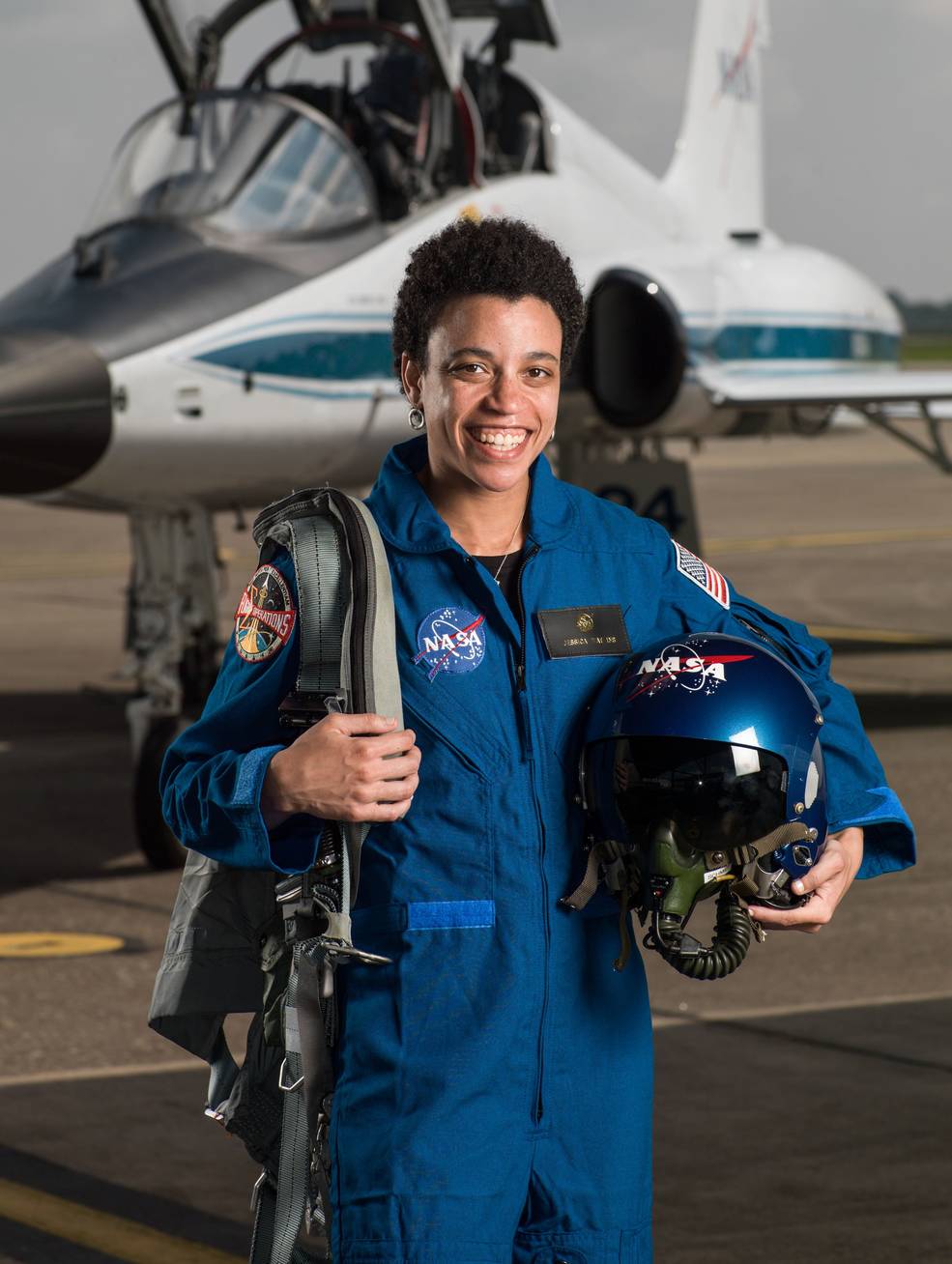
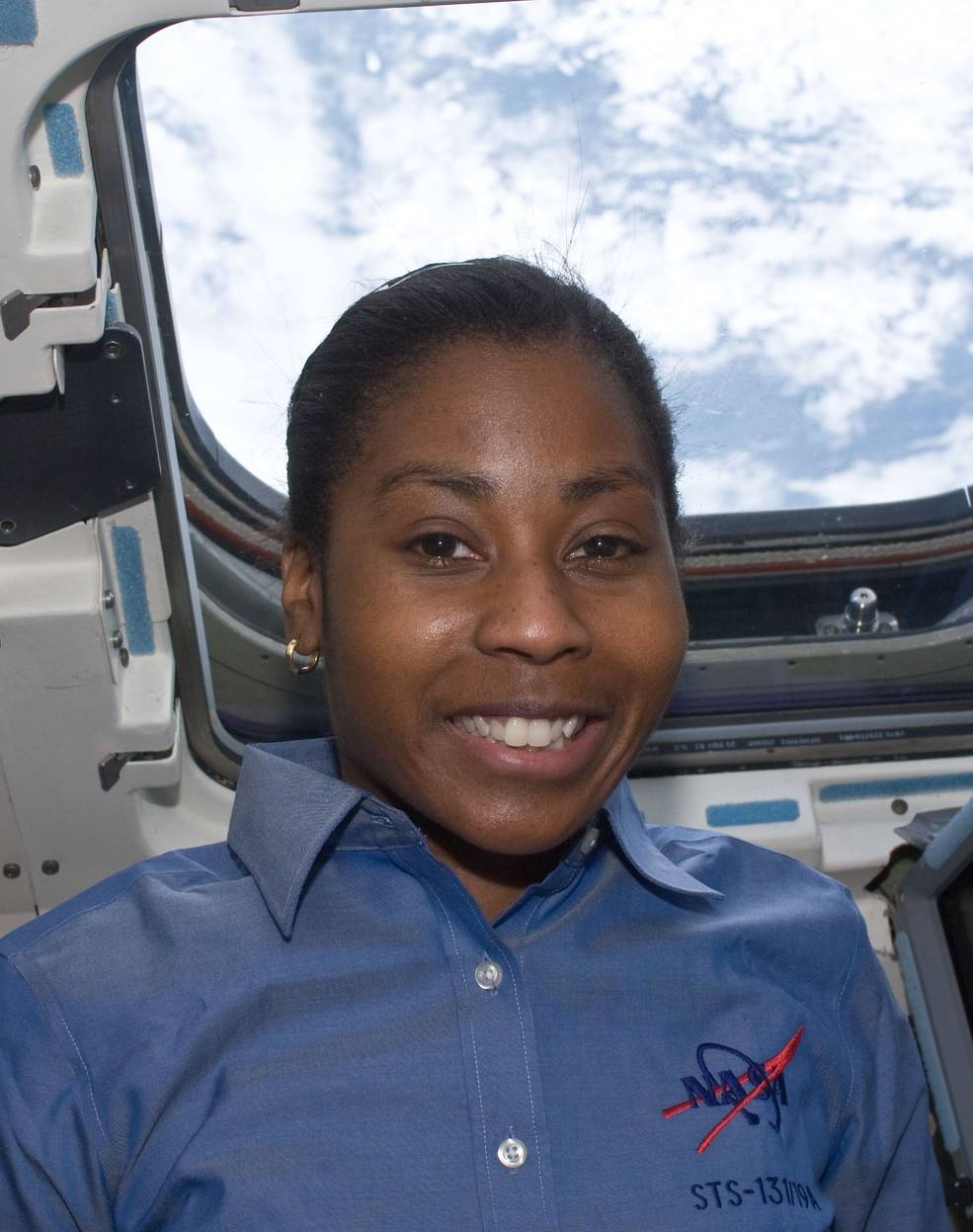
Members of NASA’s Artemis Team Victor J. Glover, left, Jessica Watkins, and Stephanie D. Wilson.
To be continued…


























